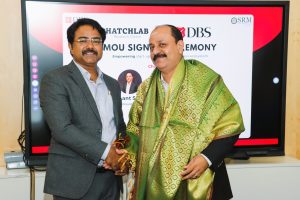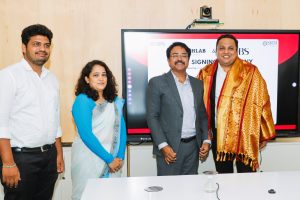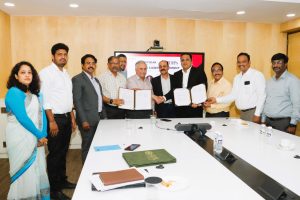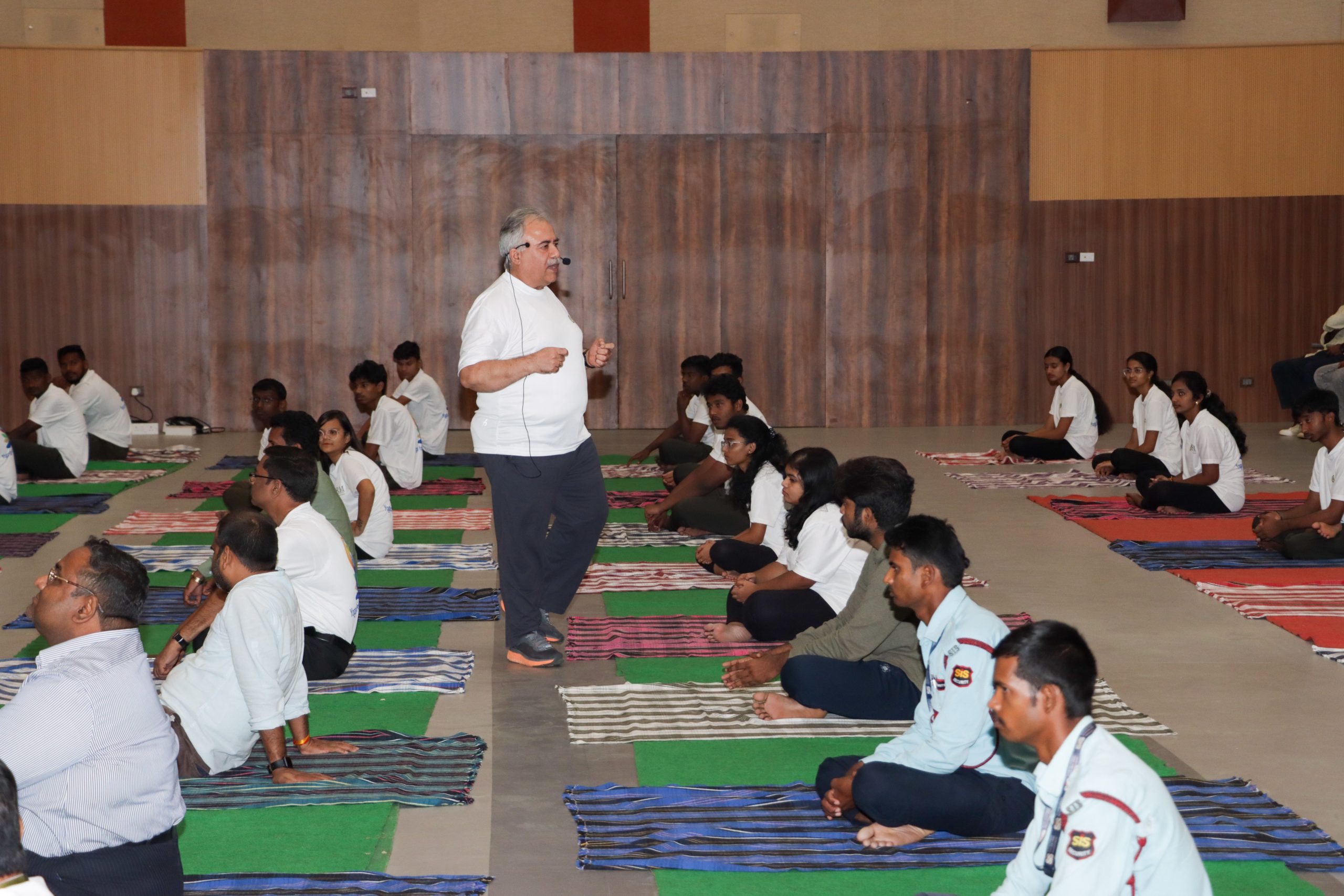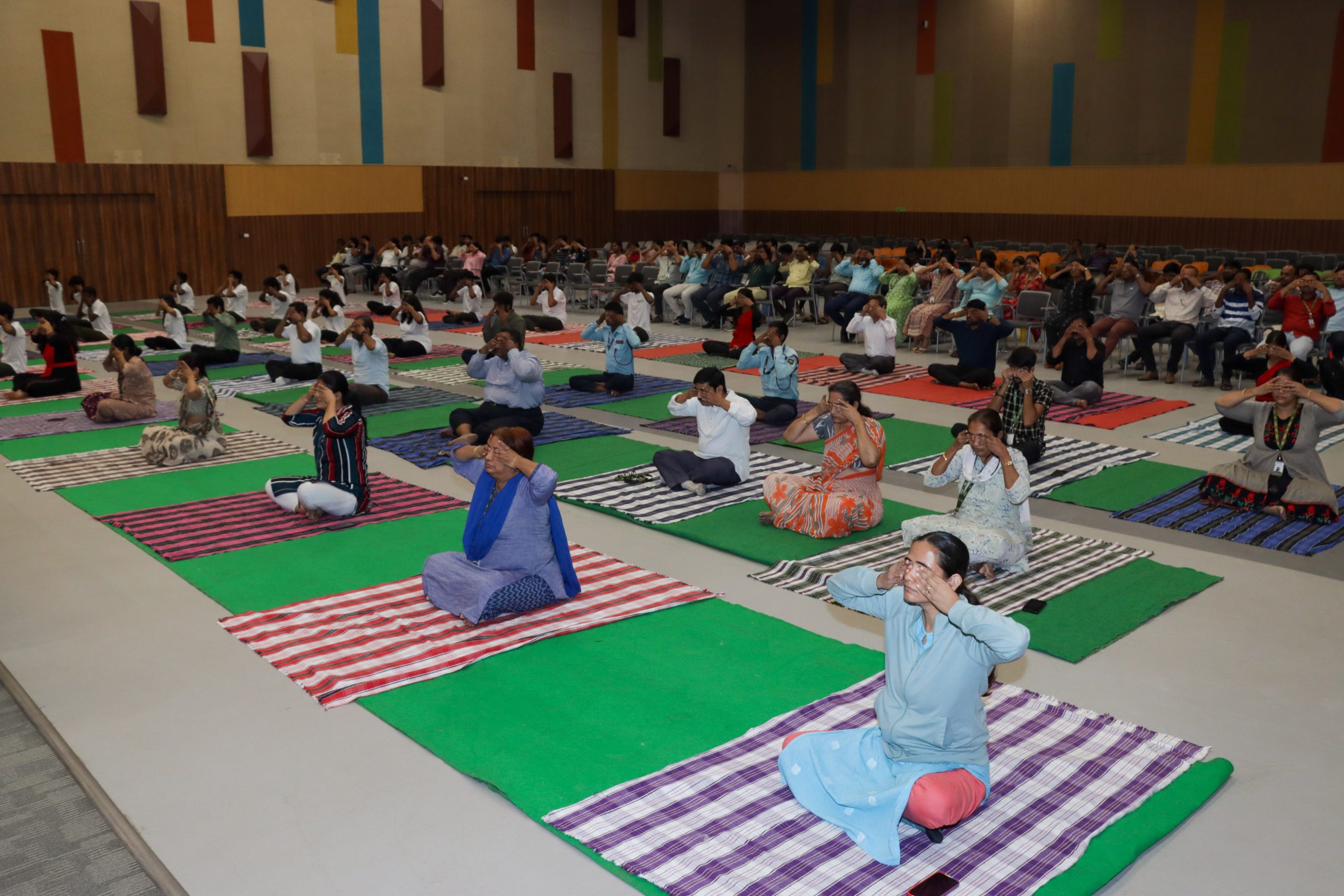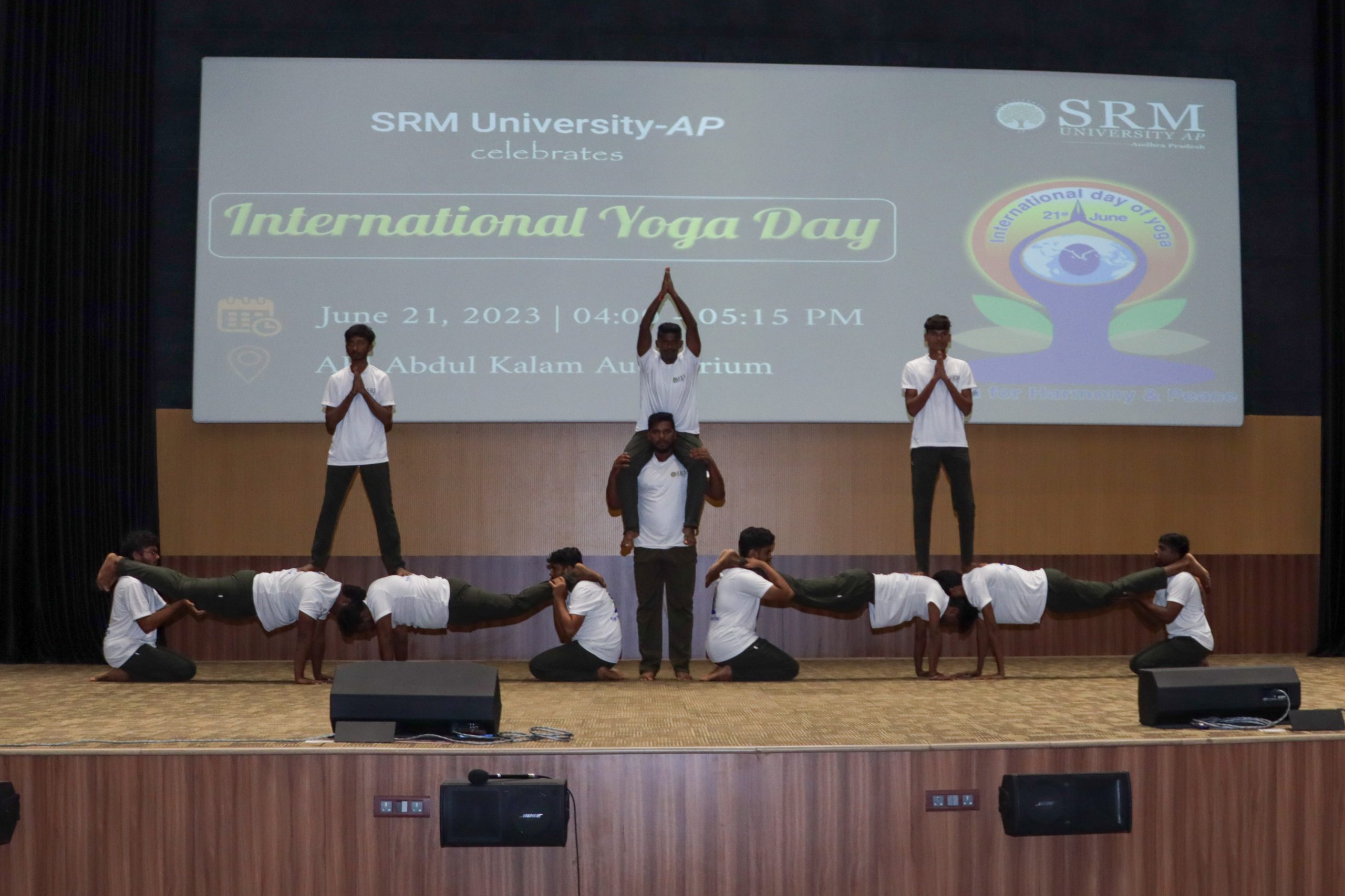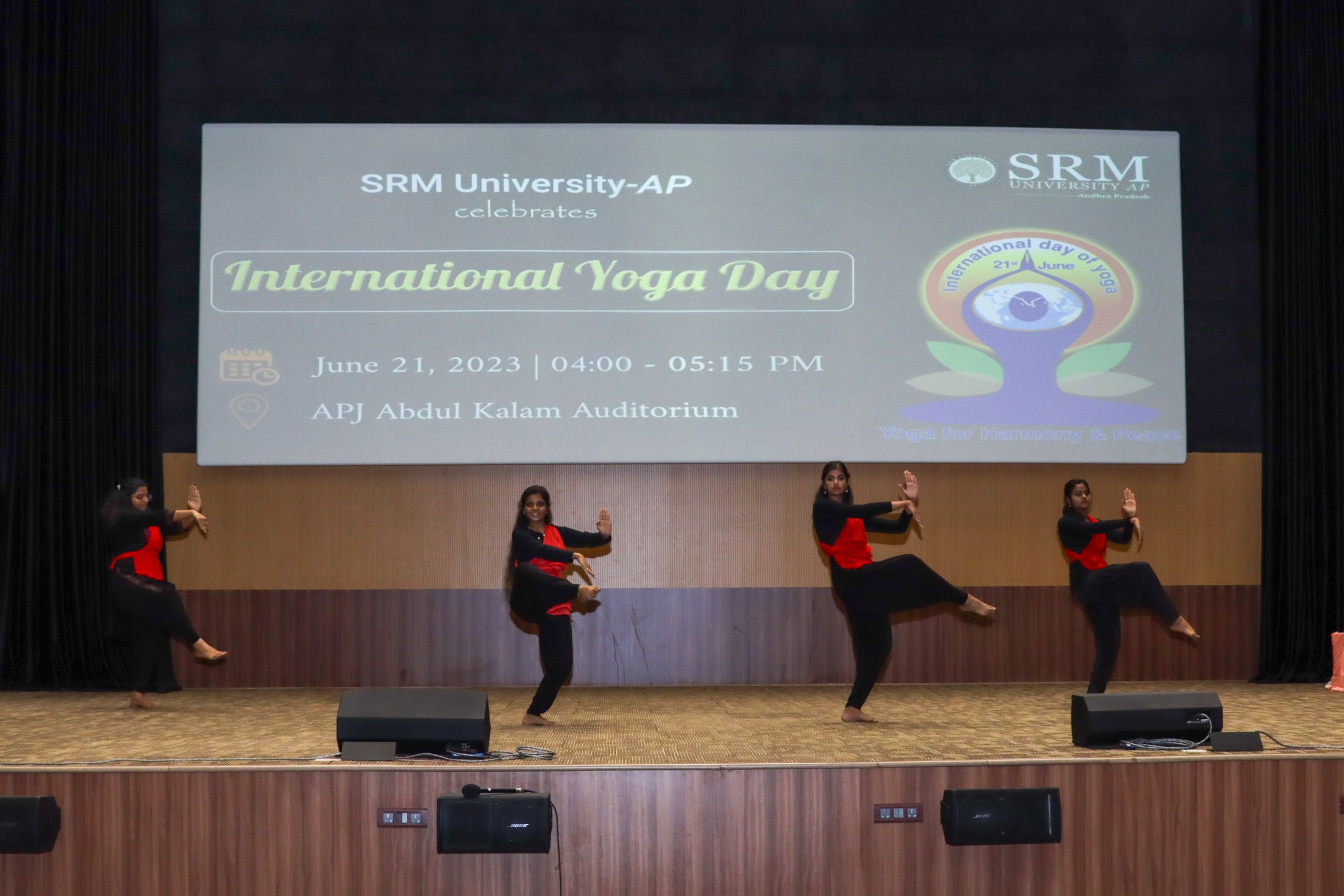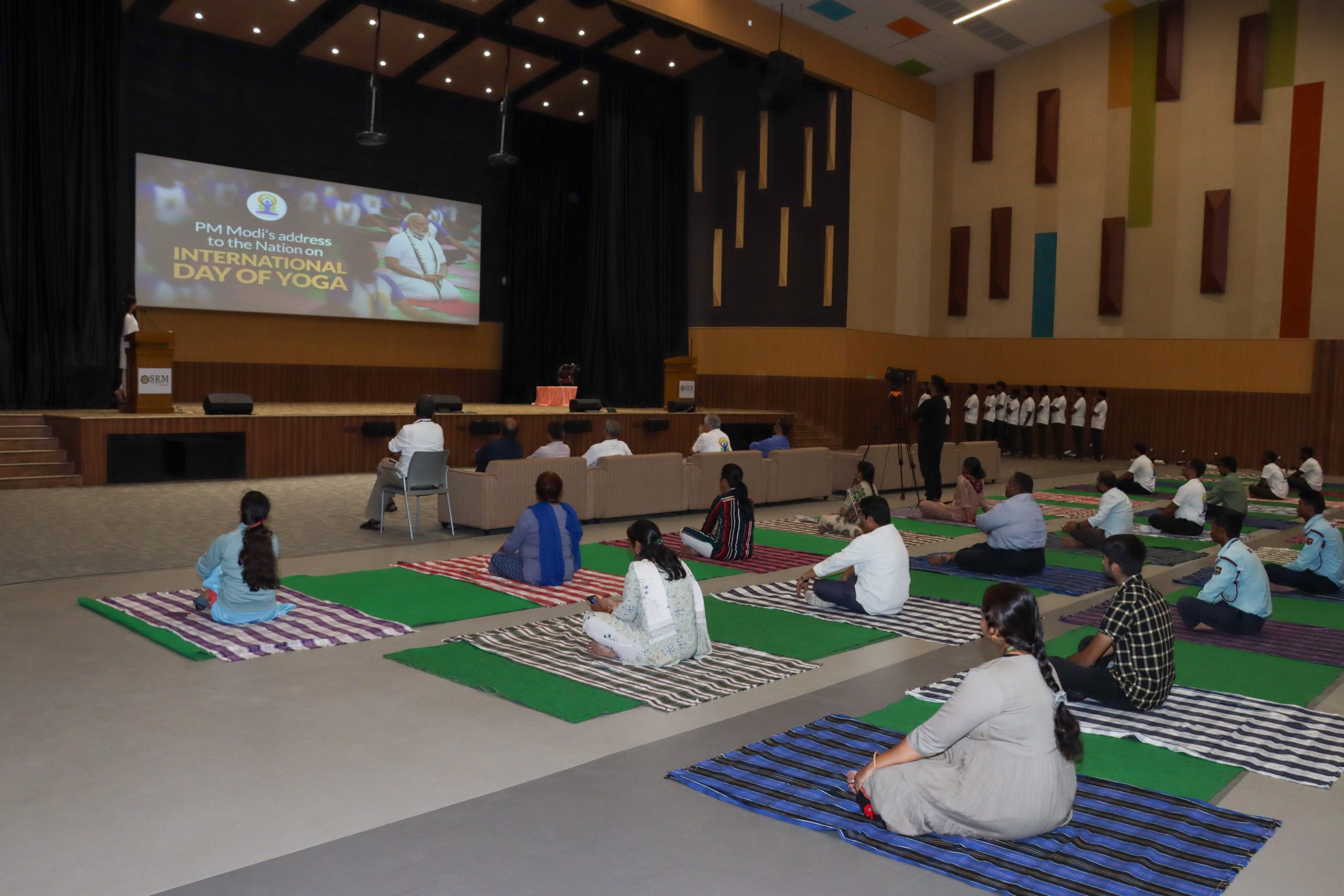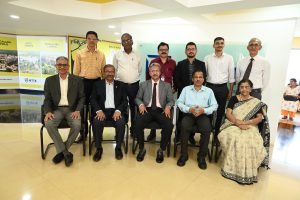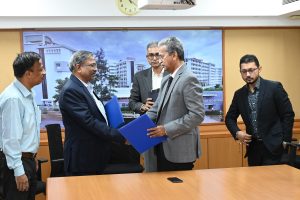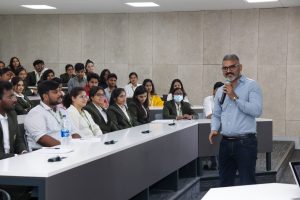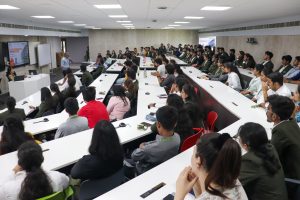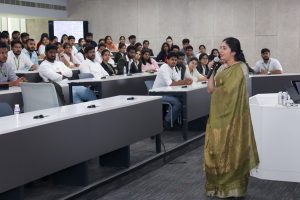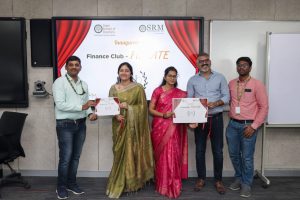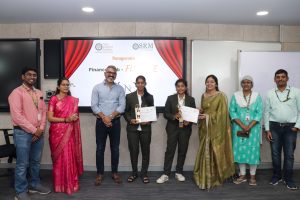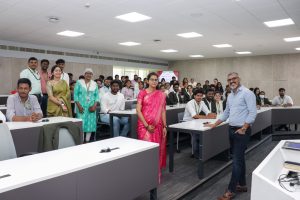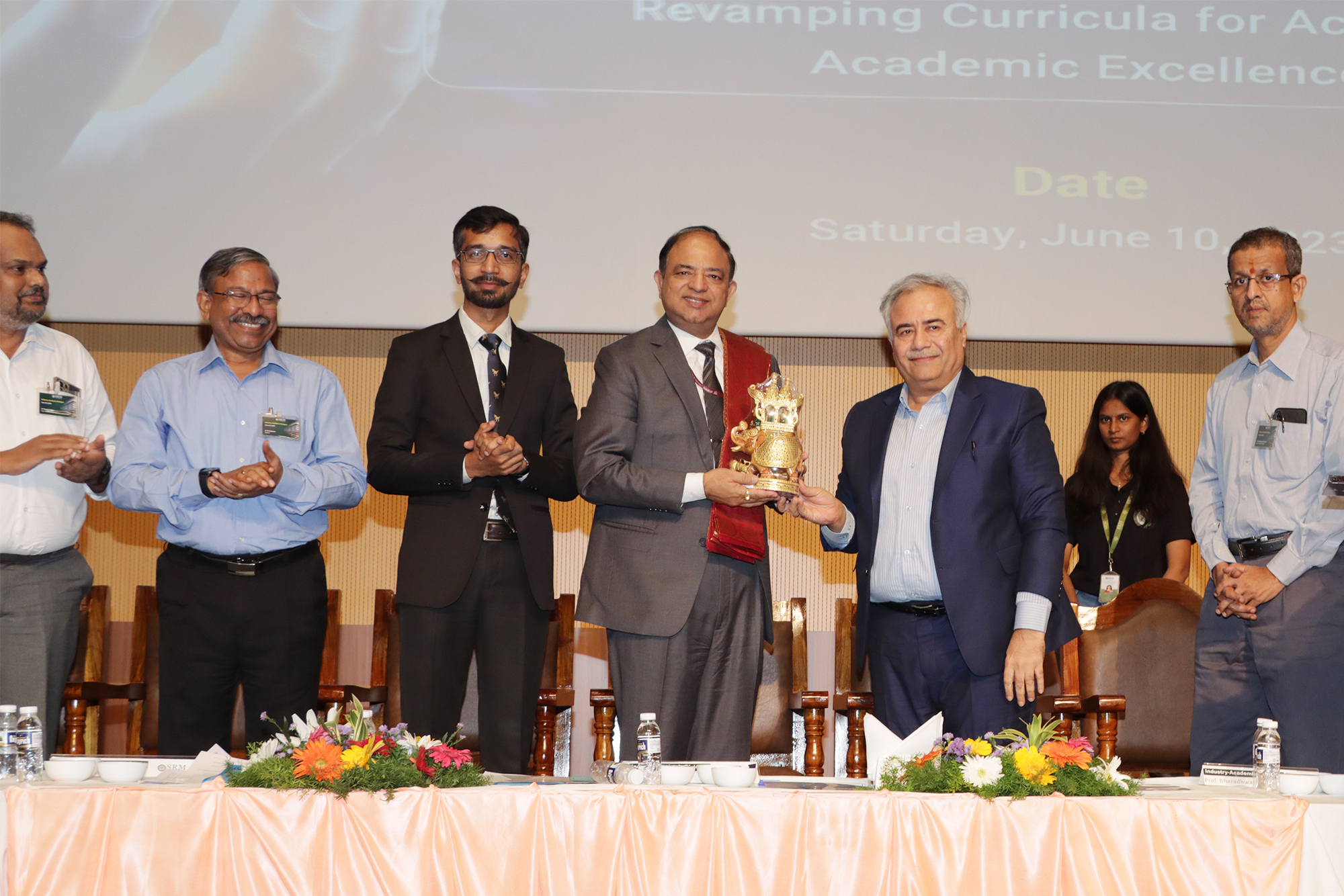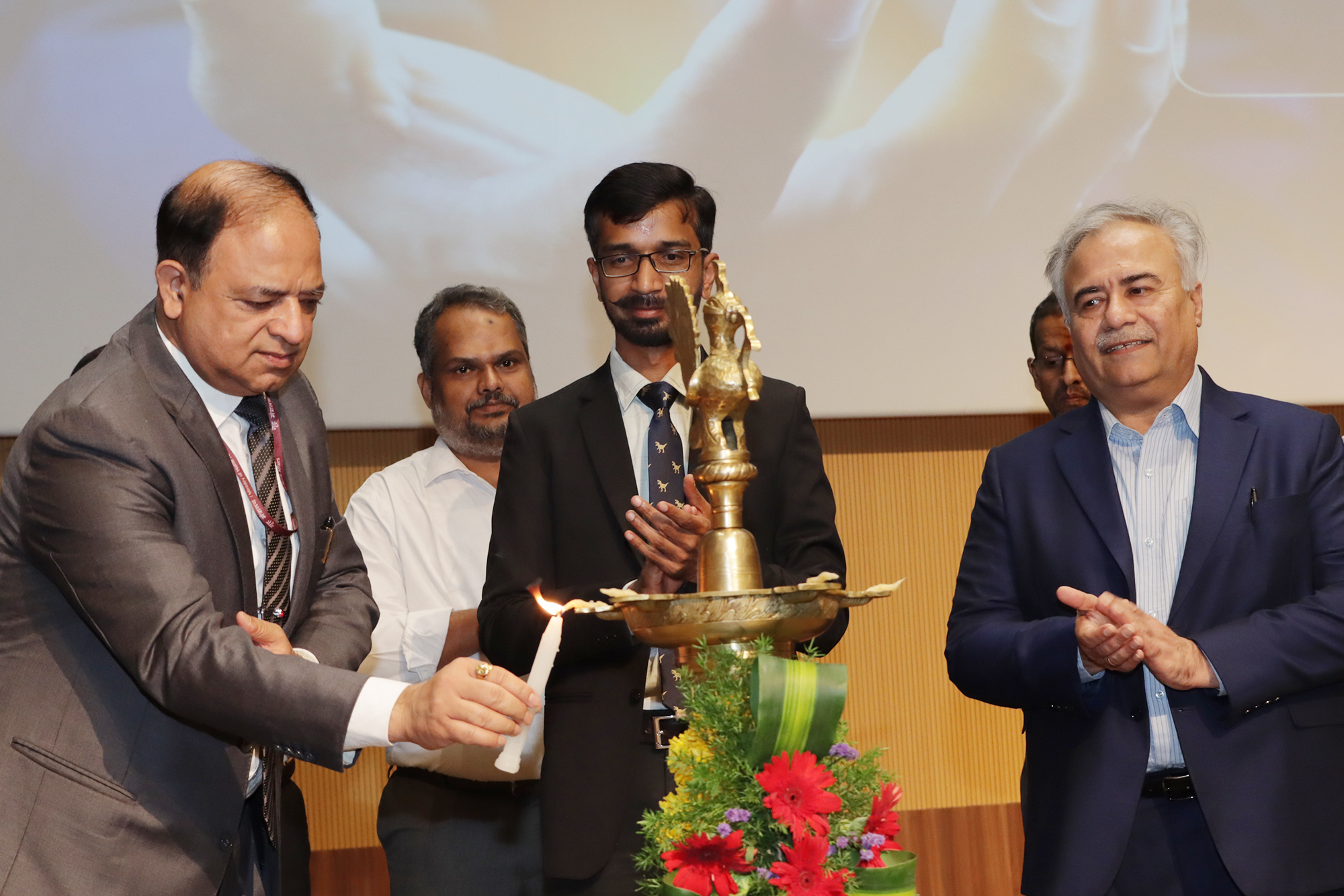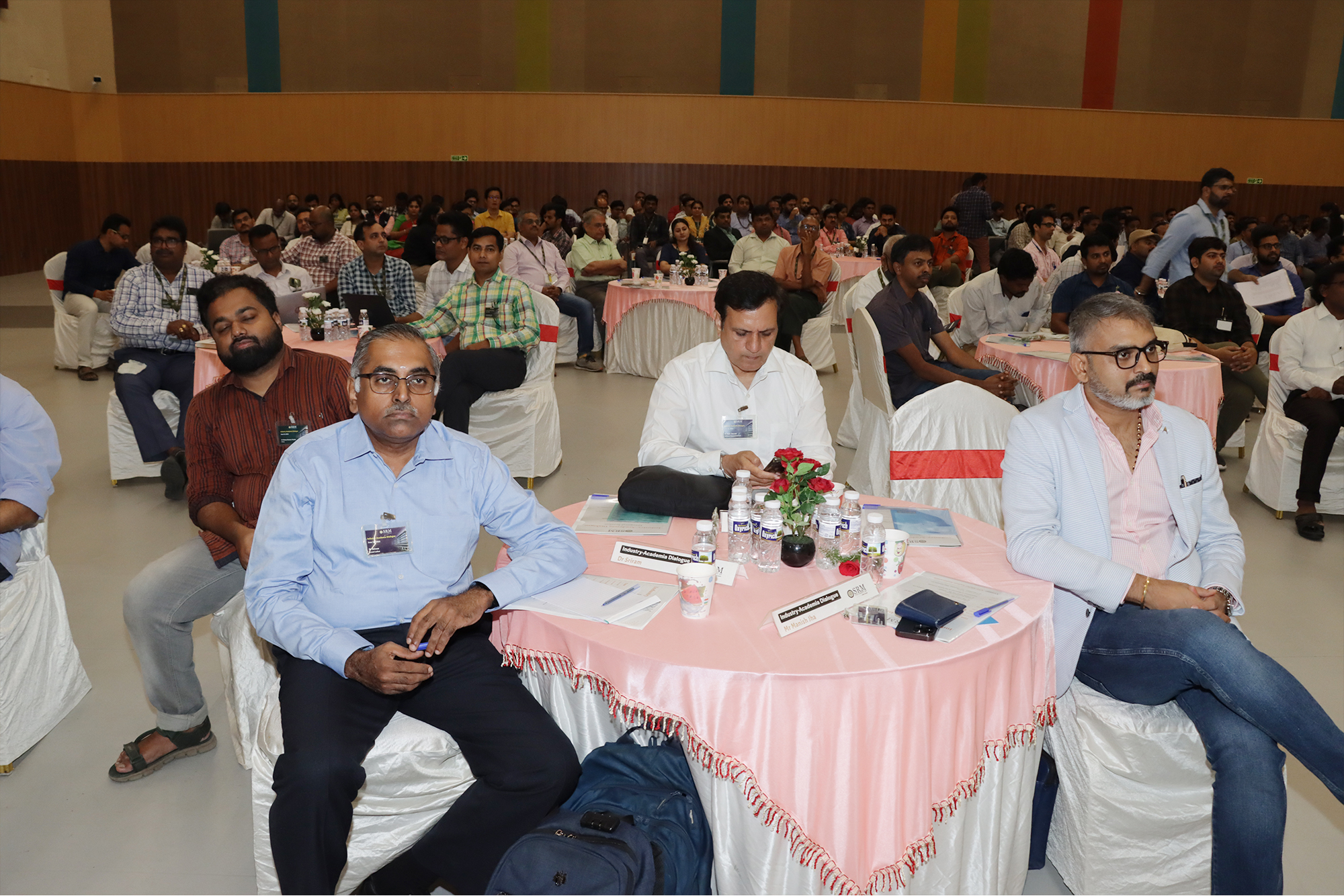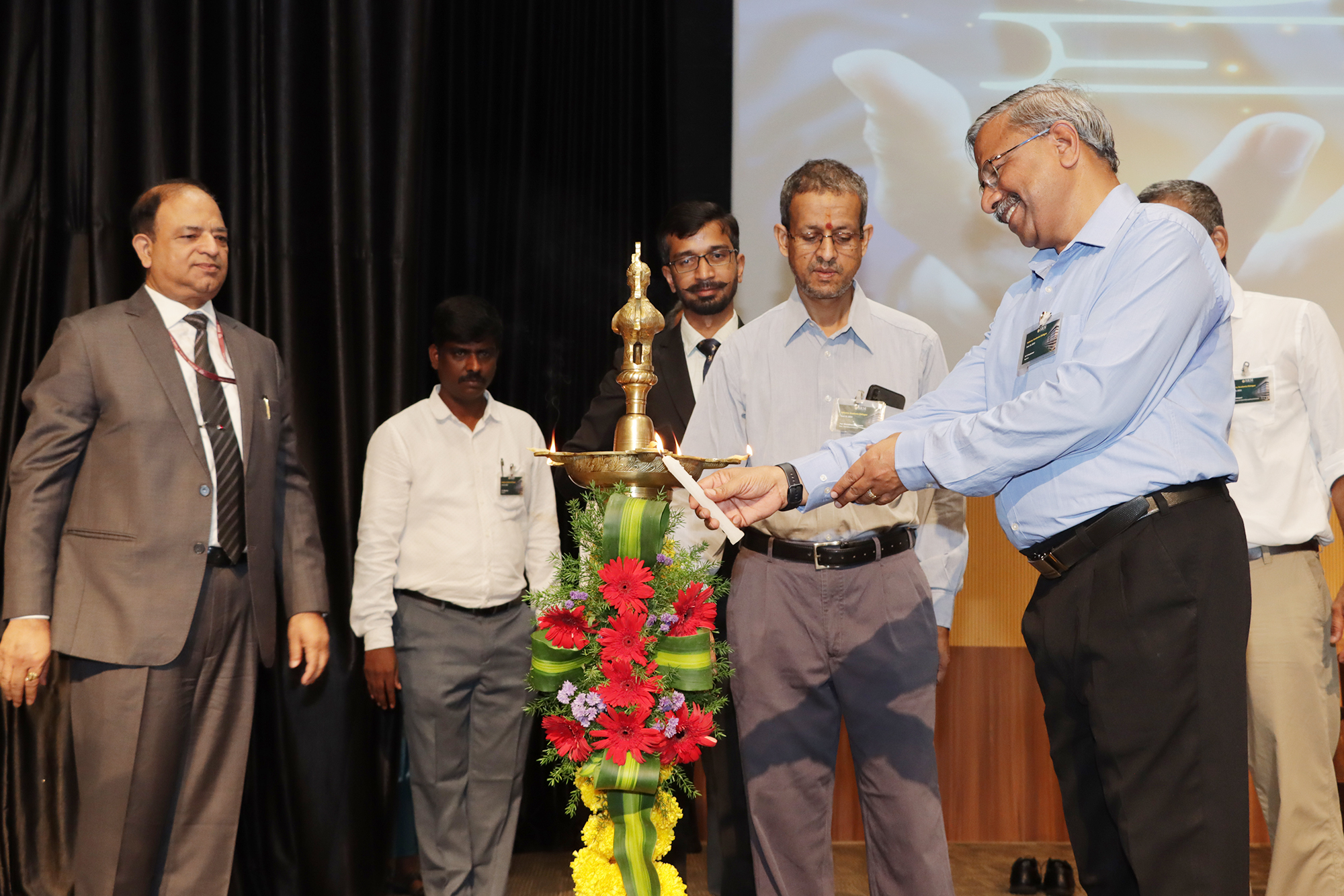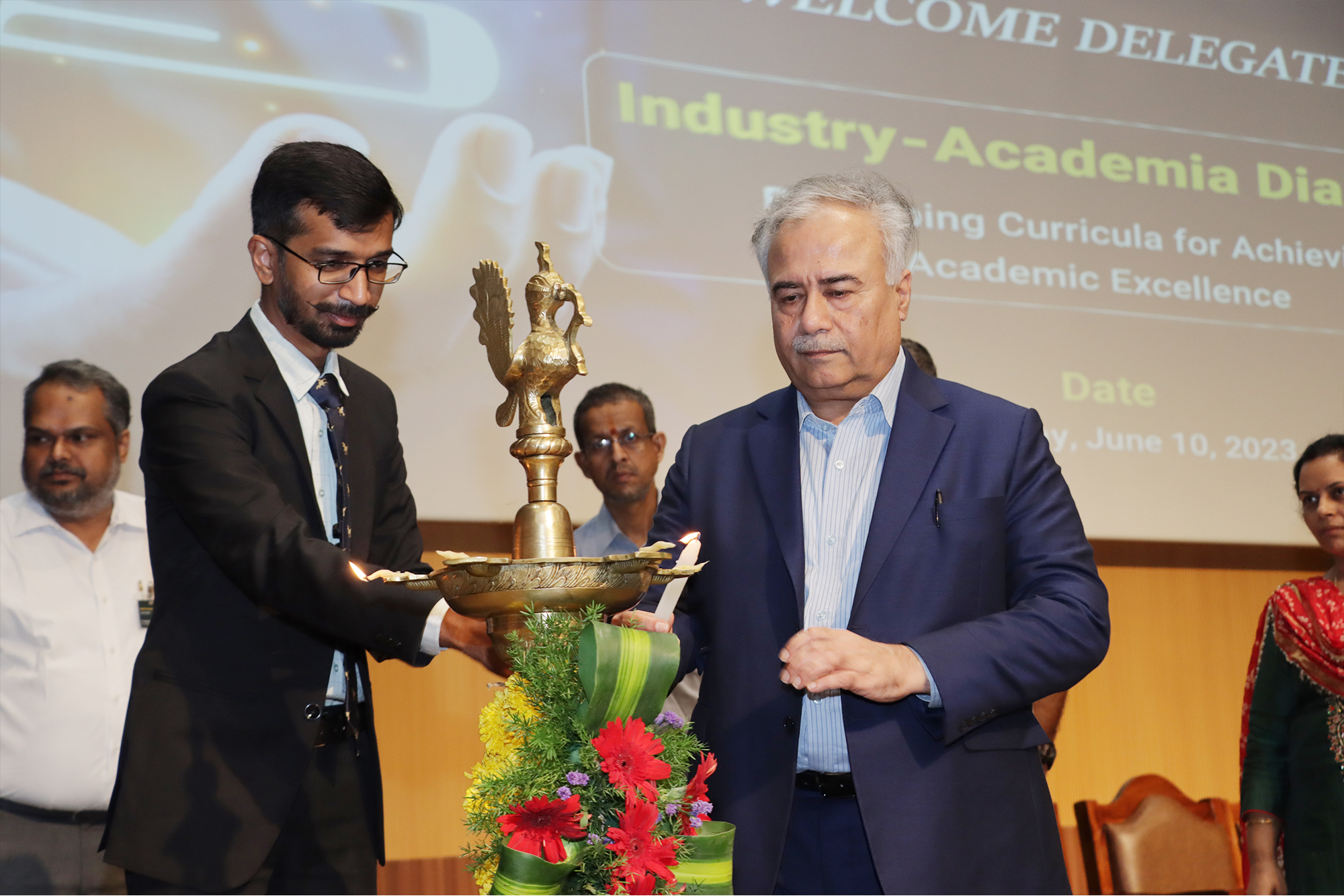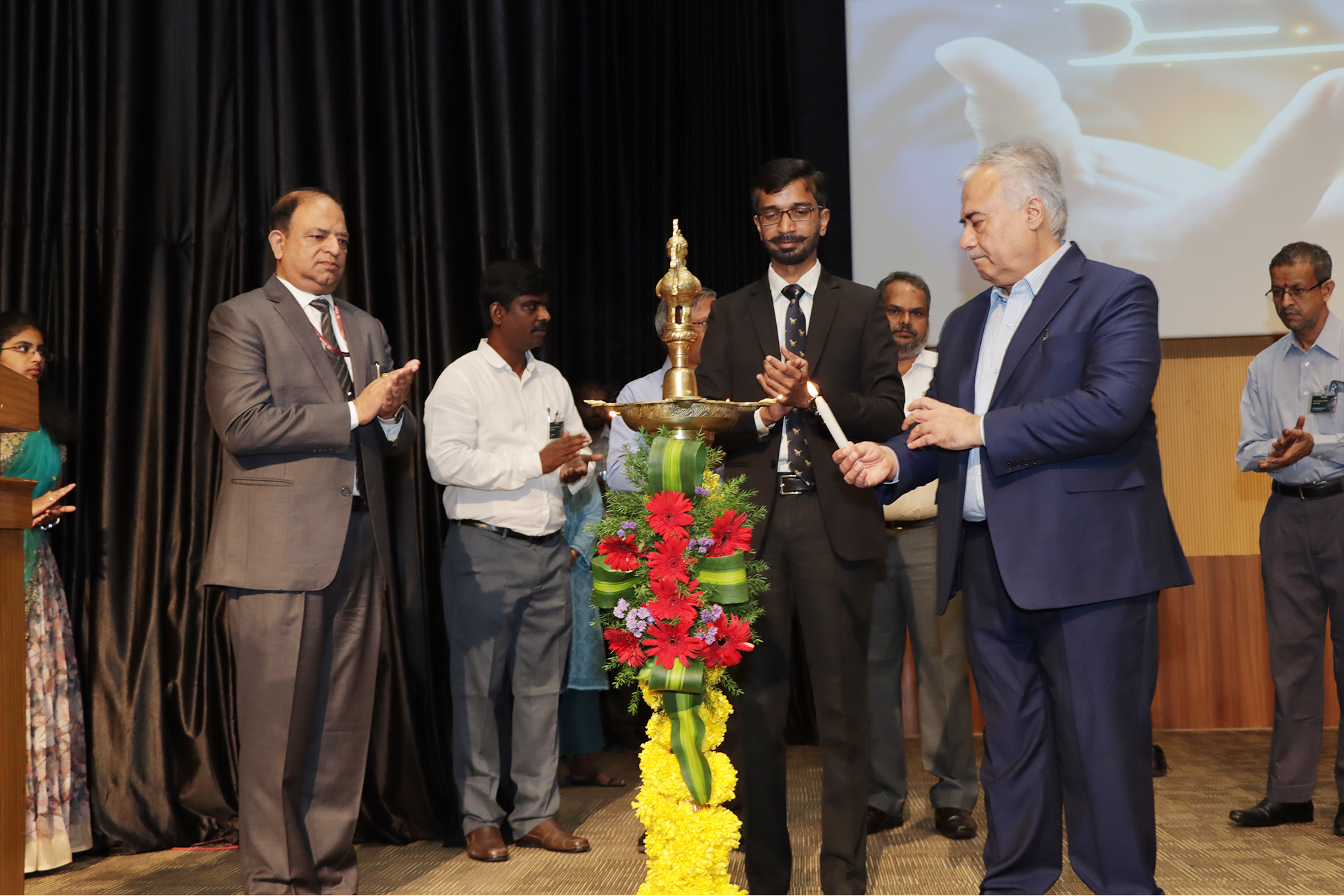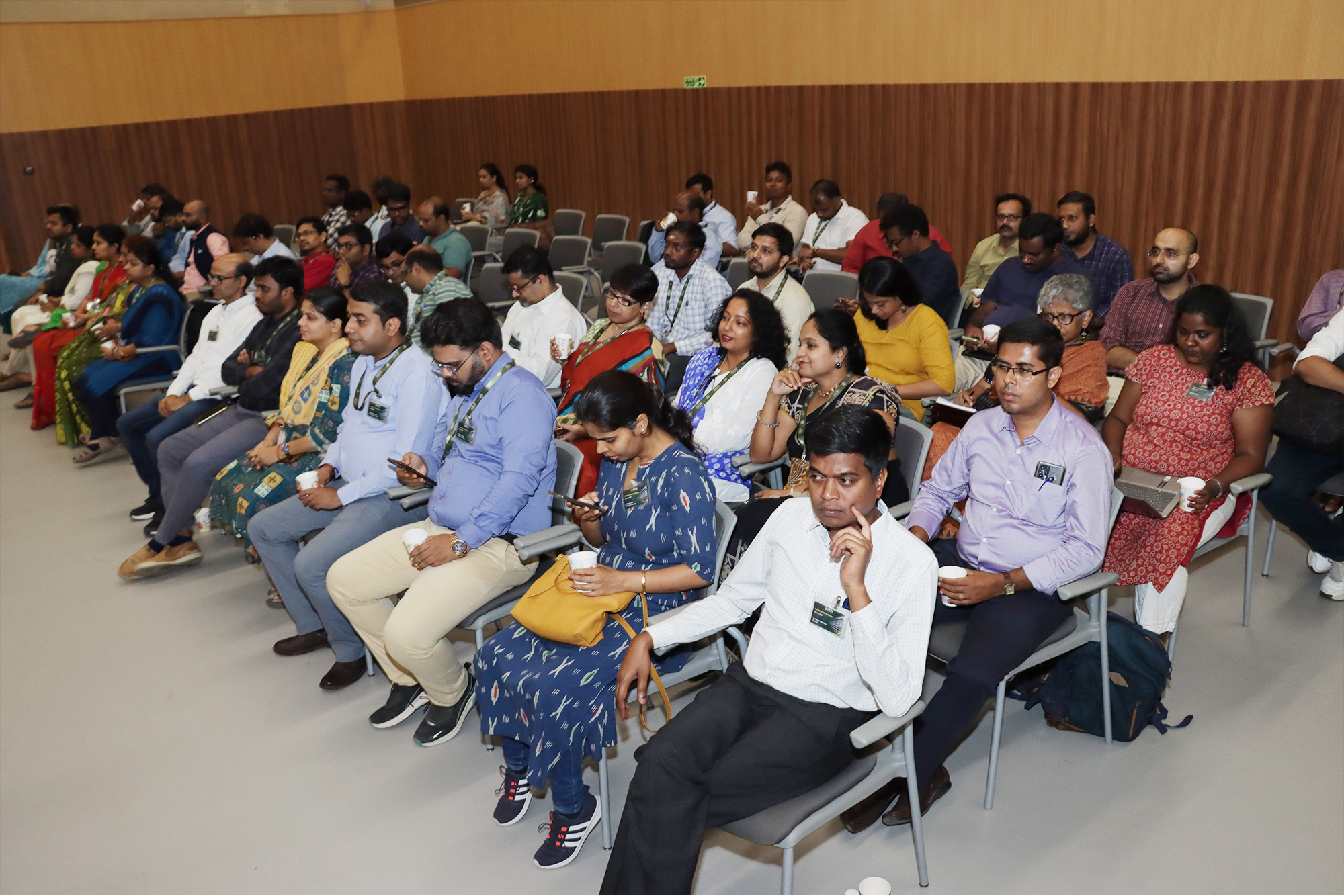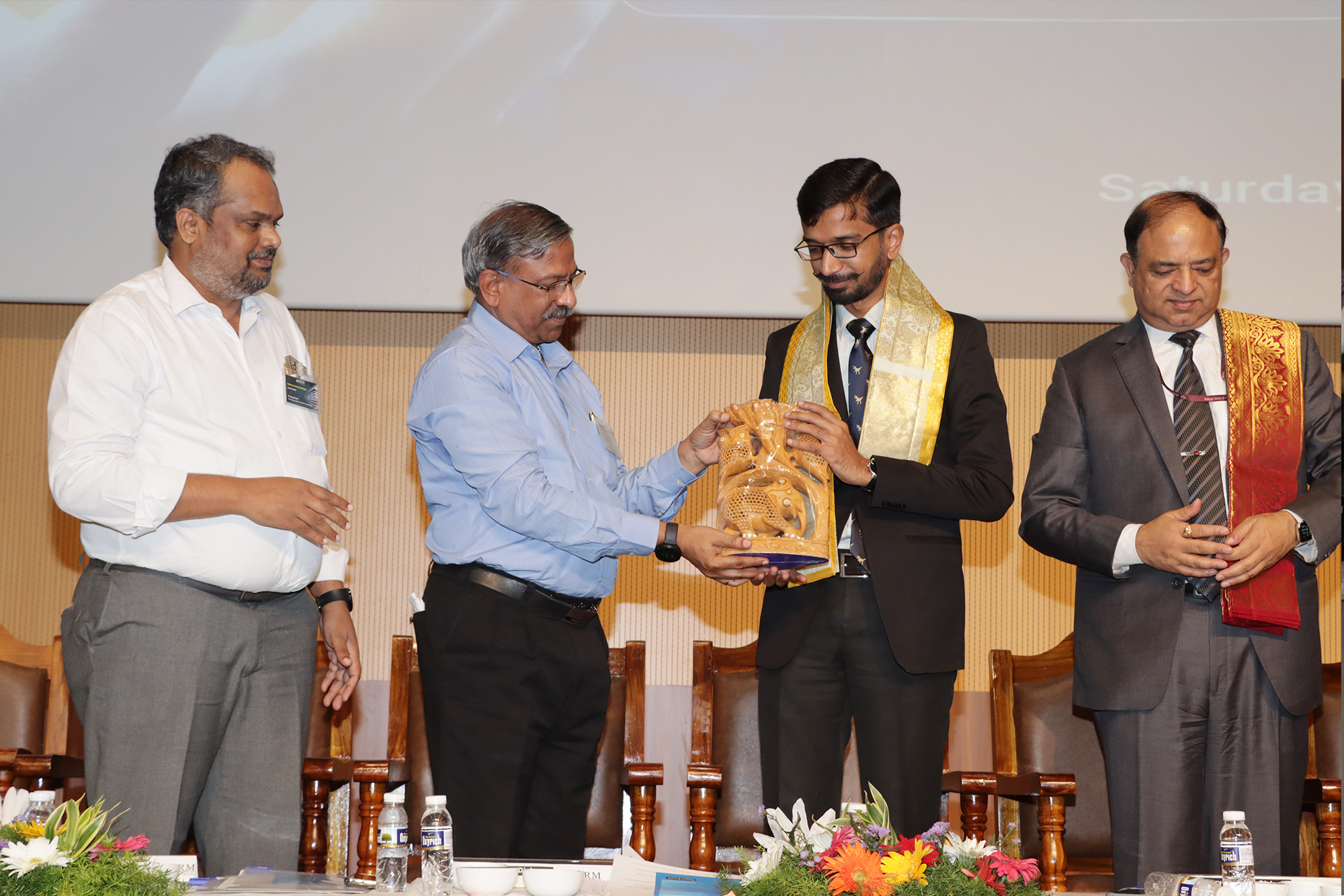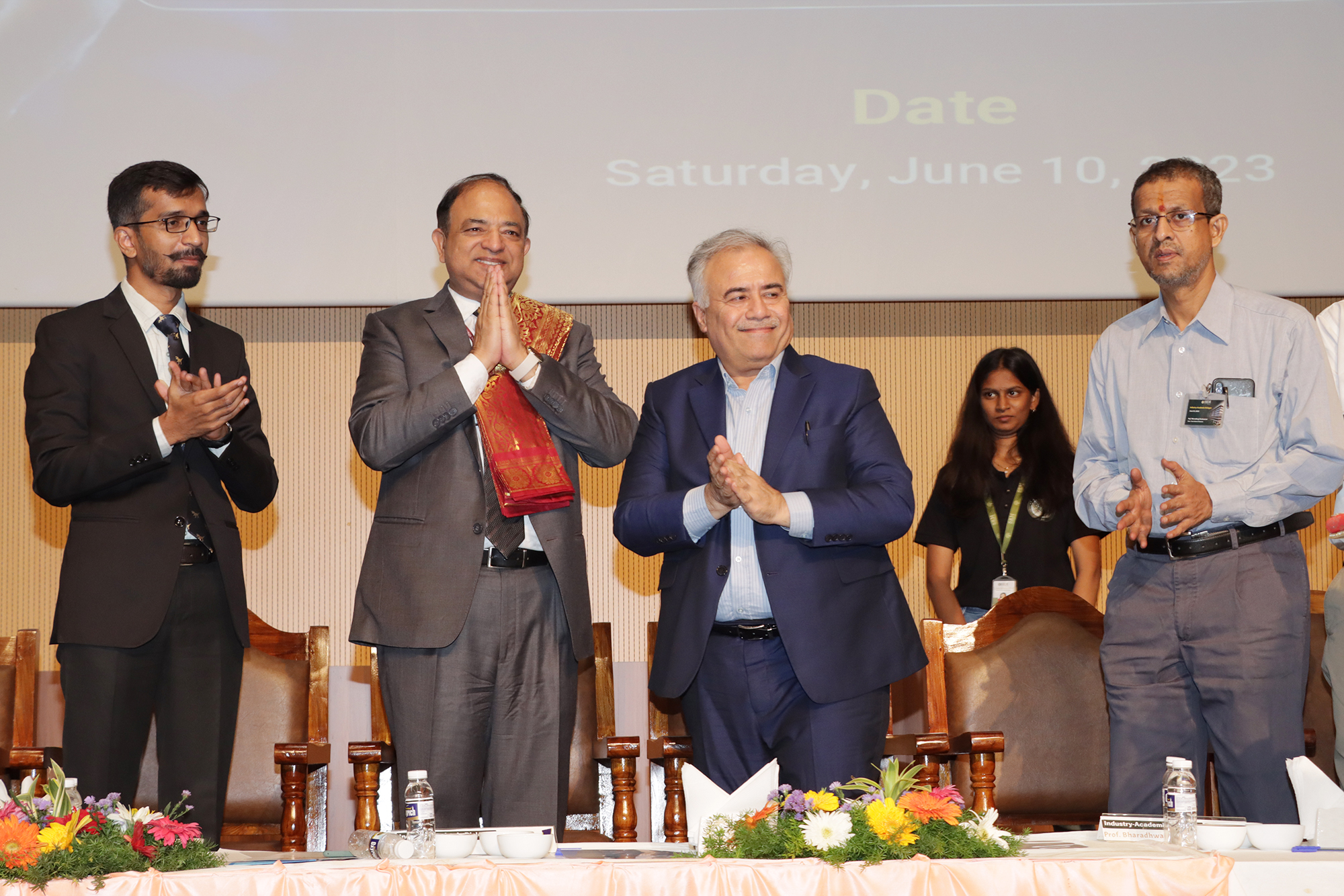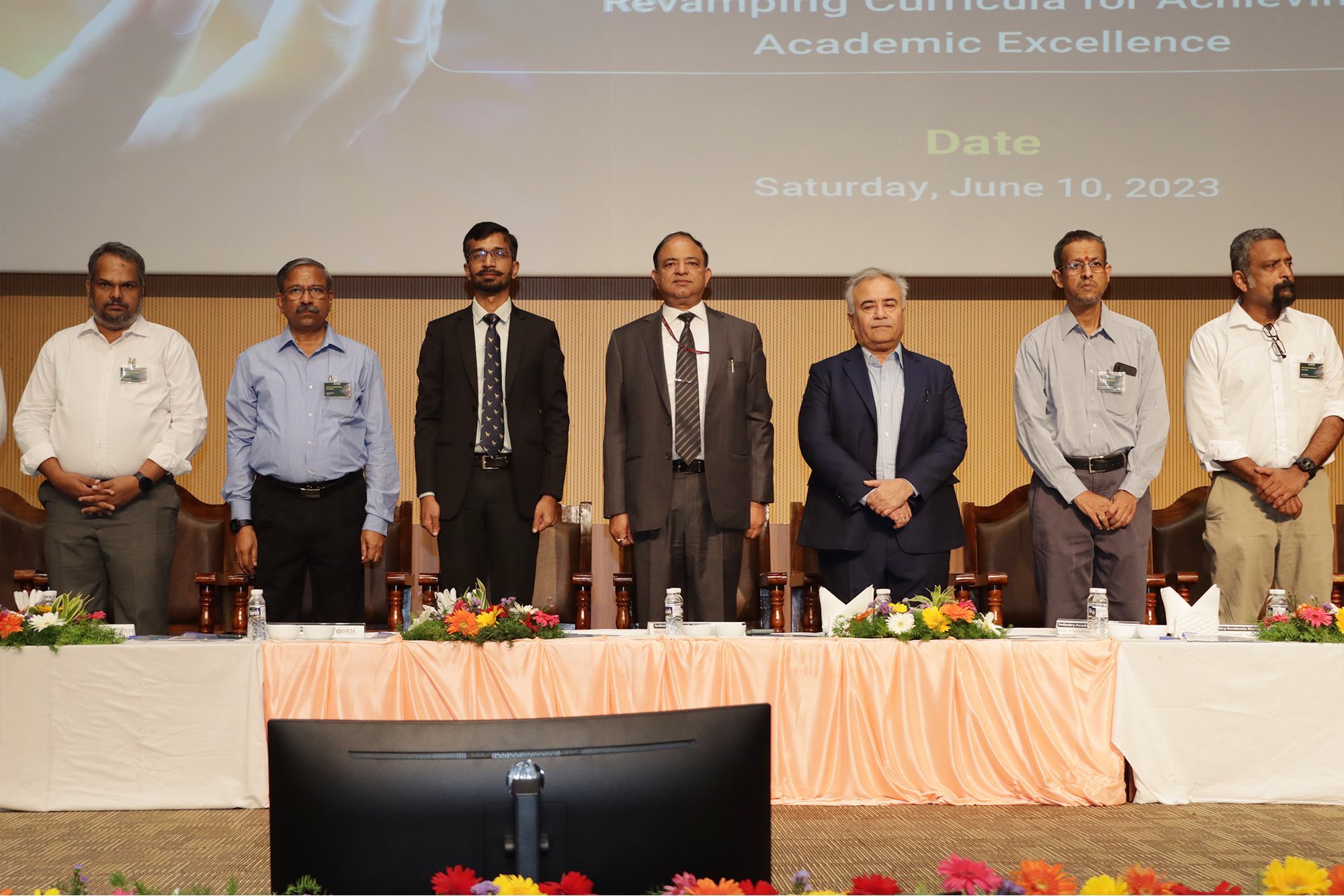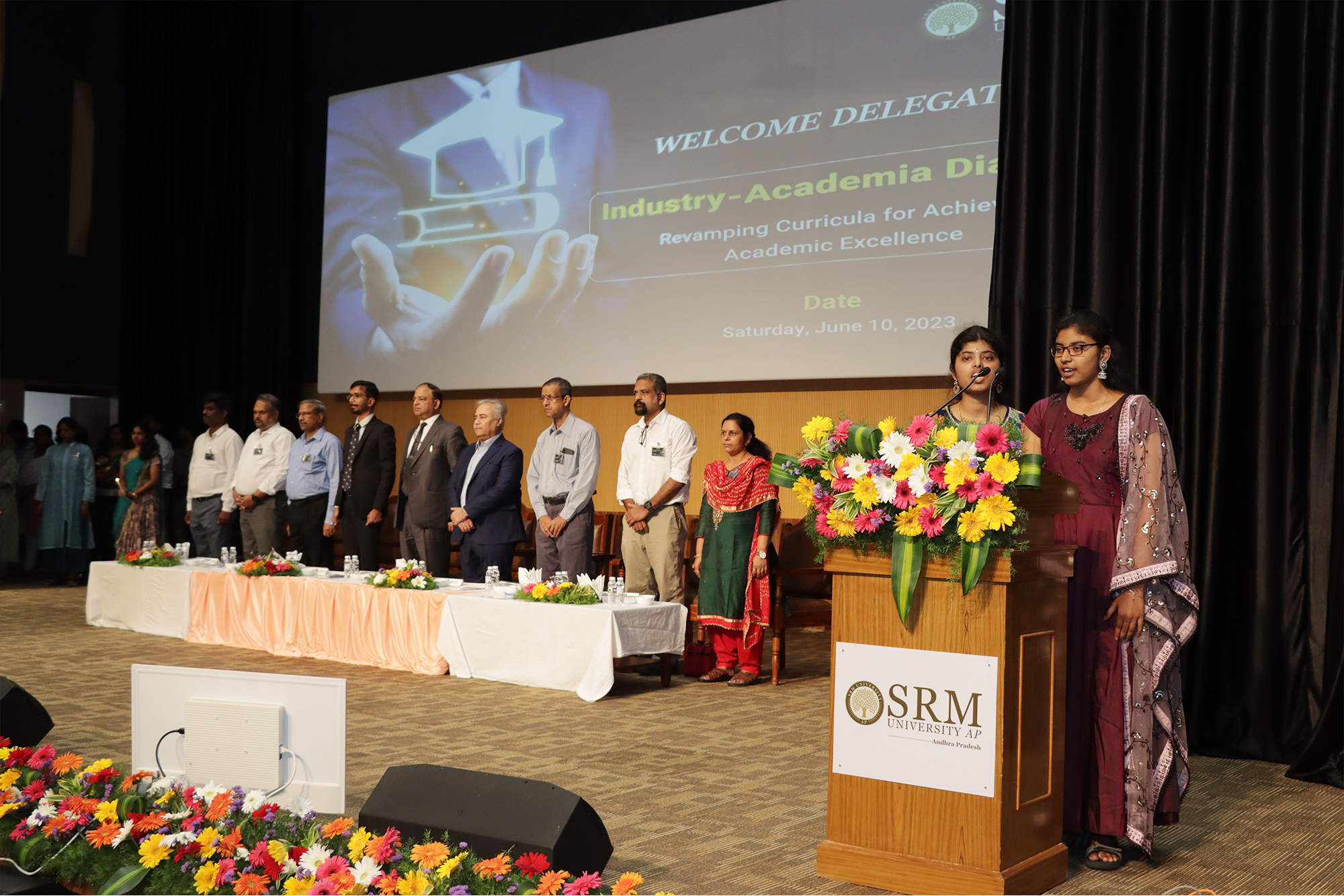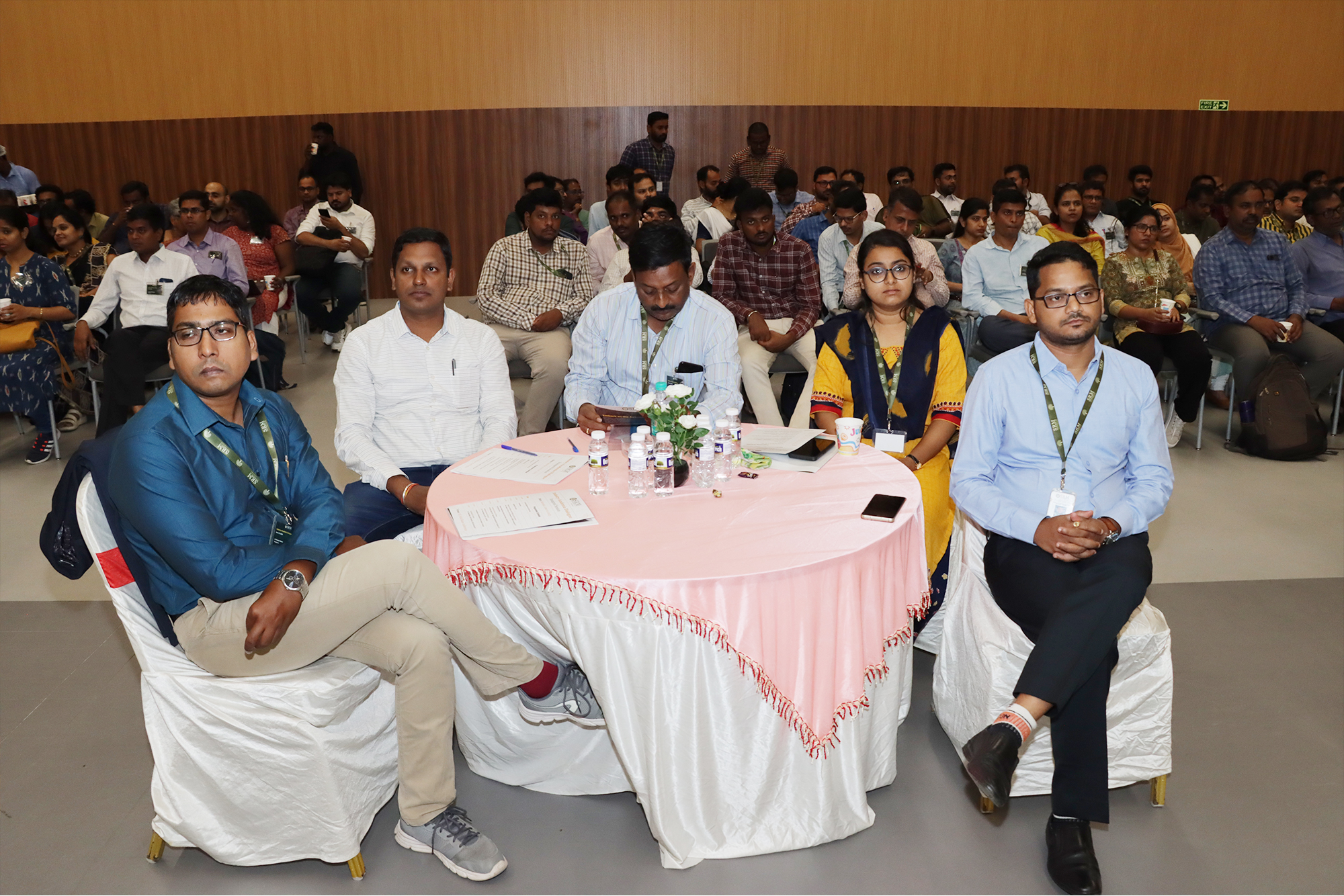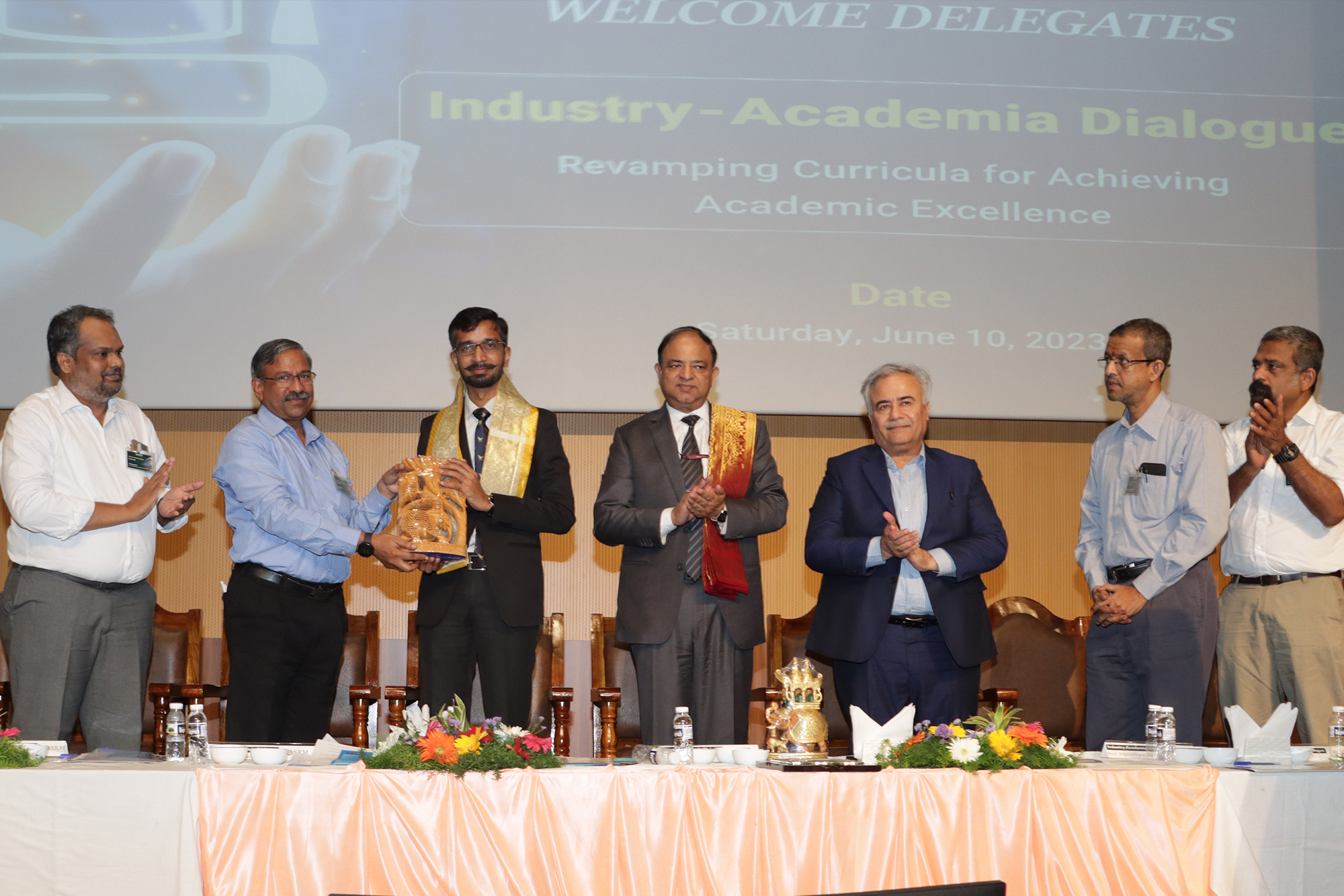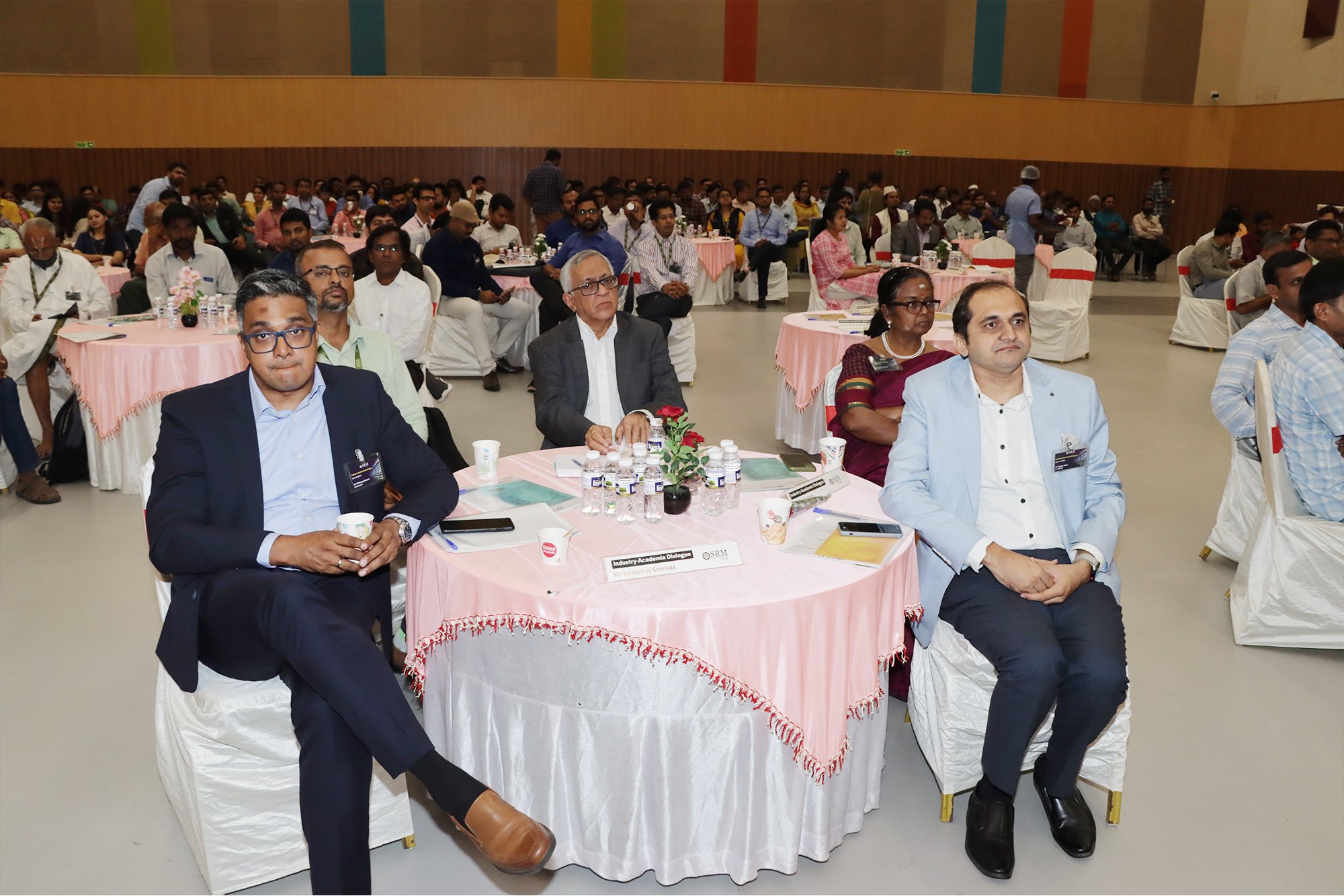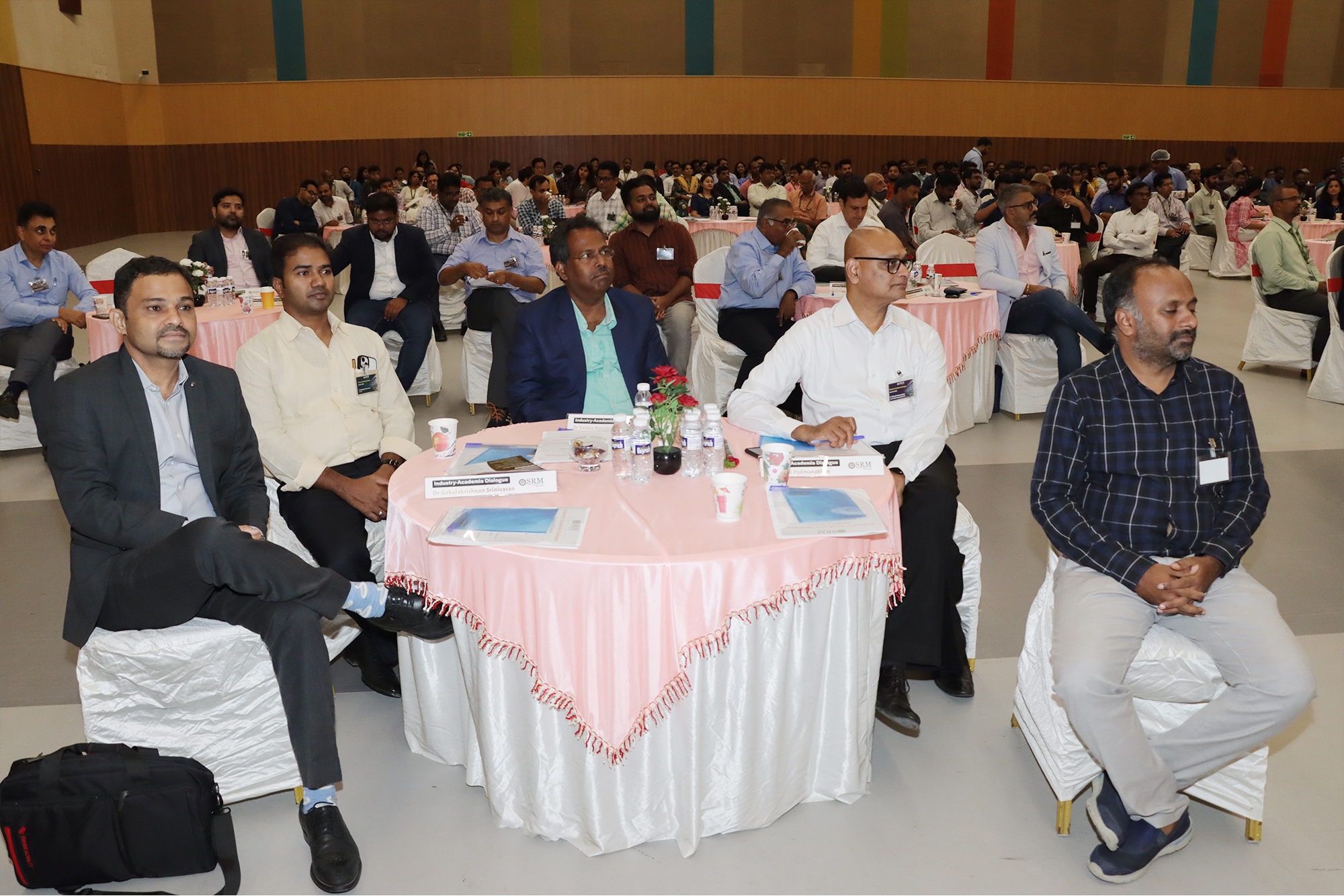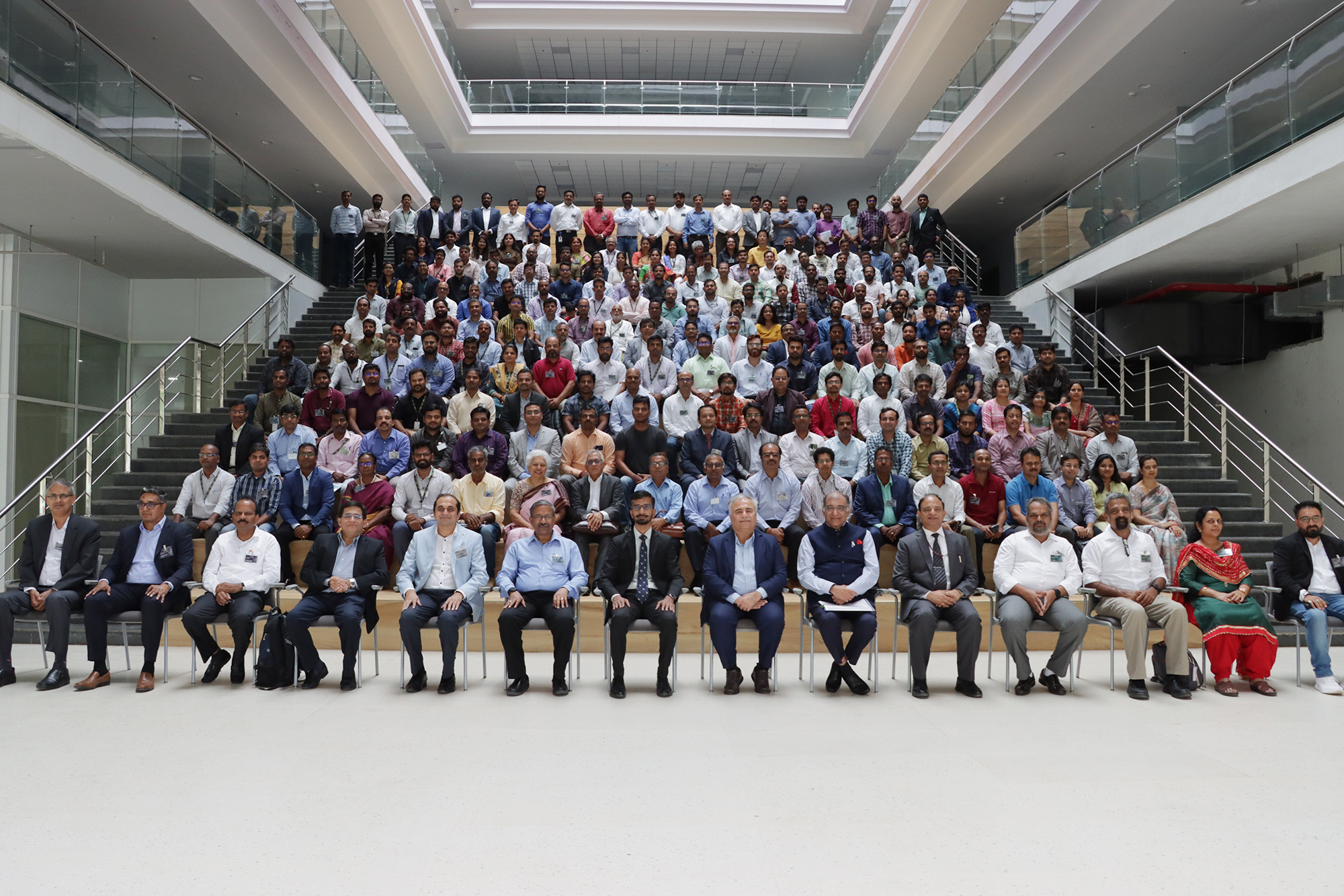SRM-AP All News
ALL News
- World Environment Day Celebrations – An Initiative to Beat Plastic Pollution June 27, 2023
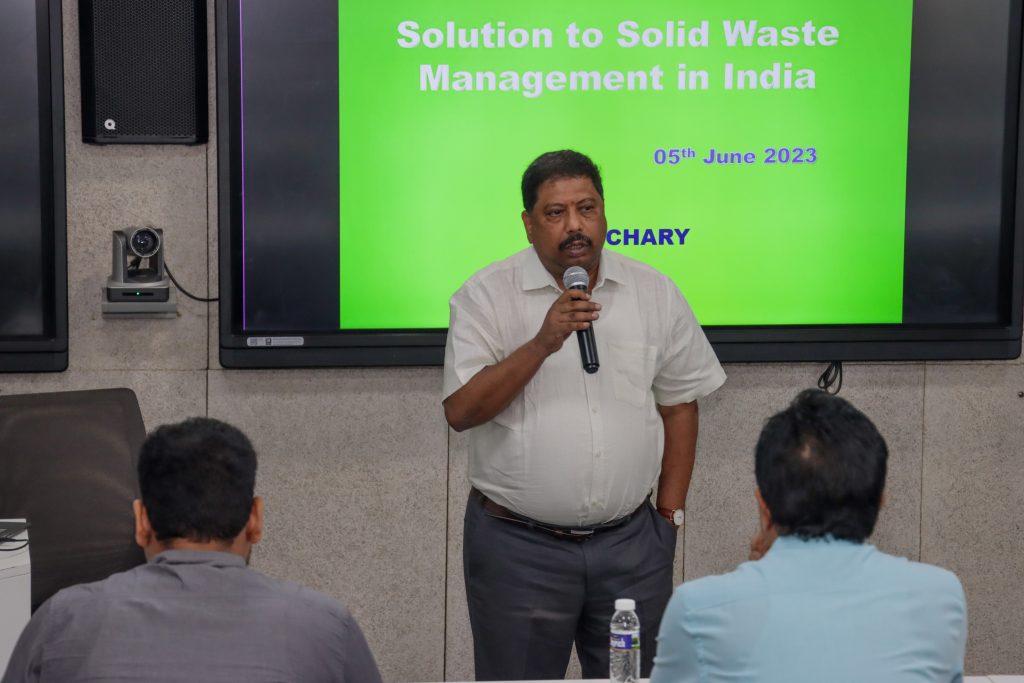
The Department of Environmental Science and Engineering celebrated World Environment Day on June 05, 2023, initiating awareness of the need to combat the climate crisis posed by global plastic pollution. The department organised two invited lectures from industry experts to expound on the theme of World Environment Day 2023, “Solutions to Plastic Pollution”. Efficient ways to tackle plastic pollution in the country and local waste management systems and policies were key points of discussion. Prof. K V Jayakumar, Professor, Department of Civil Engineering, National Institute of Technology, Warangal and Mr M V Chary, President, Jindal Urban Waste Management, Guntur, Andhra Pradesh, were the invited speakers.
Prof. K V Jayakumar lent thought-provoking insights into the types of water and how marketing strategies sell water at high prices to consumers. He also shared his experience of his visits to other countries in Europe and Asia where water is utilised wisely. Apart from water and plastic pollution, he also addressed the pressing issue of climate change happening over the years and the consequent increase in temperature. Prof. Jayakumar also suggested the book “Silent Spring” by Rachel Carson, which is often viewed as a landmark work of environmental writing, focusing on the harmful effects of pesticides on the environment.
Mr M V Chary shared in-depth information about the Jindal Urban Waste Management at Guntur, stating the various source of waste, collection points, transportation to the Jindal Waste – Energy Plant, and how waste is converted to energy (through incineration) at the plant. Unique aspects of the plant were also discussed at length, along with a video presentation demonstrating the complete working of the plant. The interactive session with Mr Chary, wherein he shared his expertise in the industrial sector, was beneficial for the students.
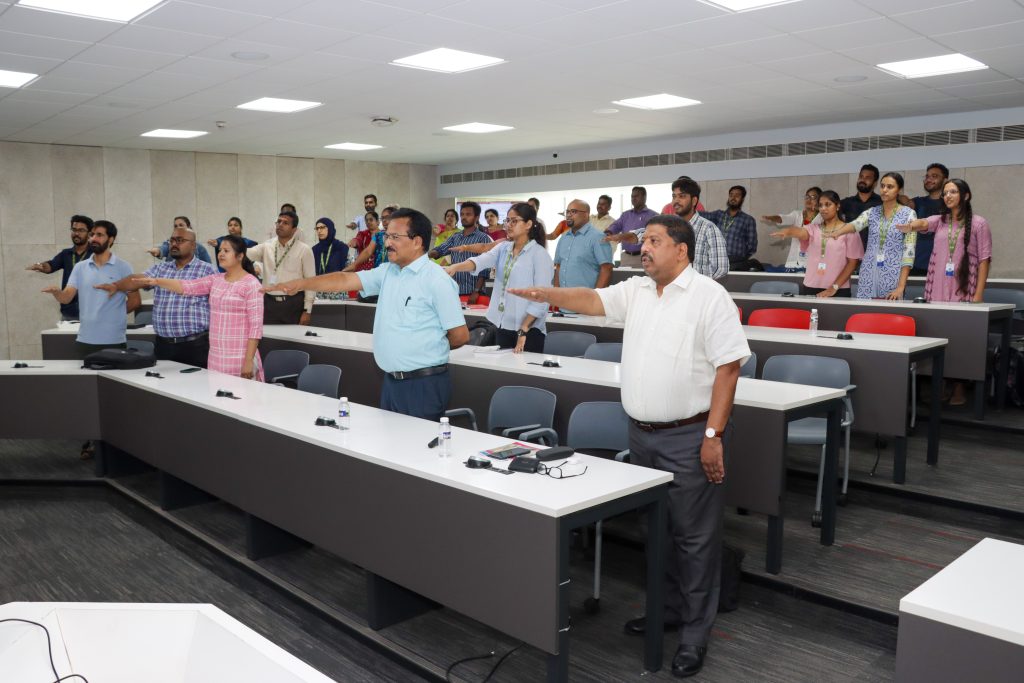
A pledge was taken by all participants at the end of the seminar emphasising the importance of saving the environment, sustainable resource management and the need of awareness among all in reducing the pollution as well as global warming and climate change.
Dr Karthik Rajendran, HOD of the Department, delivered the welcome address and the event witnessed an active participation of 85 participants which constitutes Professors, Faculty, PhD Scholars, Undergraduate students from various departments. There were also faculty and scholars from neighbouring colleges such as Acharya Nagarjuna University, Sidhartha Mahila Kalasala and Ministry of Culture, New Delhi.
Continue reading → - Physics Graduate Secures Two International Internships June 26, 2023
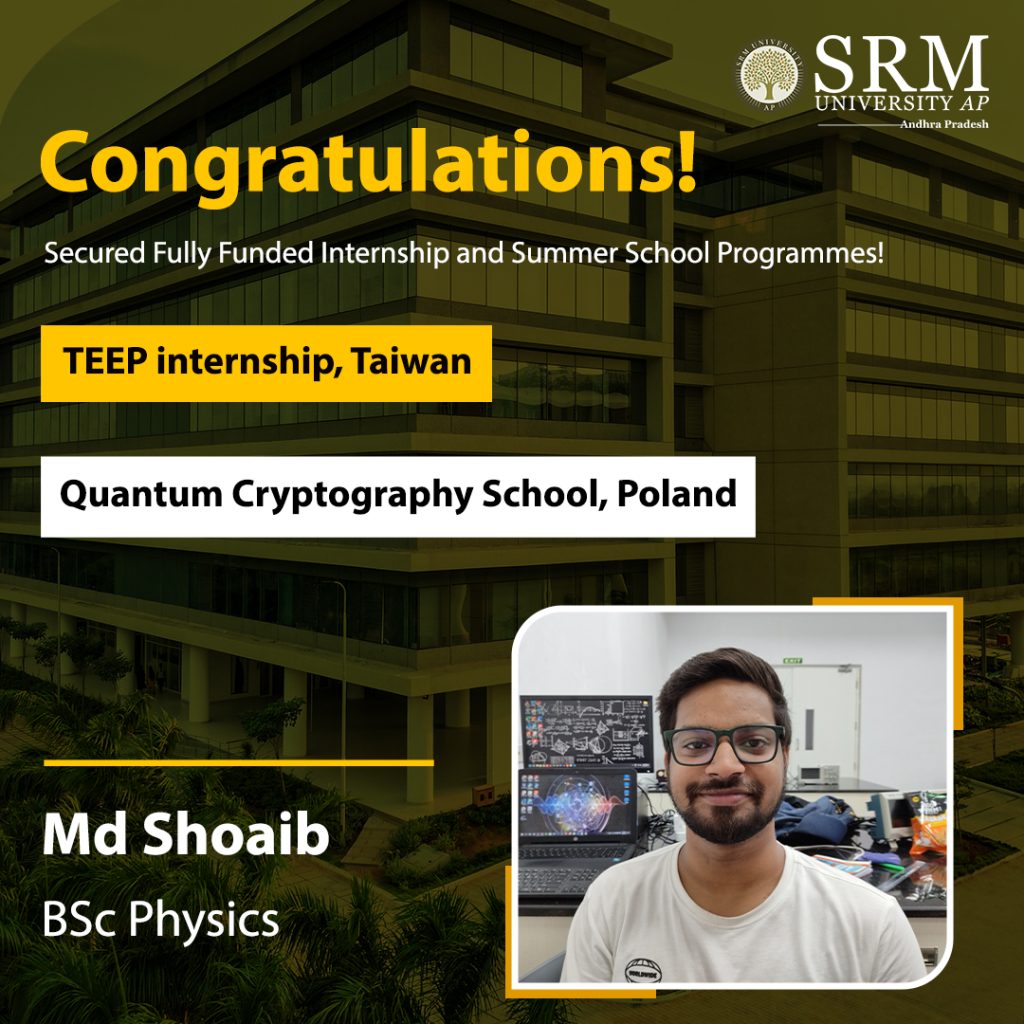
In an era where competition in the job market is on the peek, internships give you an edge over the rest of your peers. It gives you an opportunity to get real-time experience and put to practise what you have learnt. But not everyone manages to acquire an internship, while most students manage to barely secure a single internship, Md Shoaib, has bagged not one, but two exciting international internships in the field of Quantum Physics!
Here’s what Md Shoaib has to say on his remarkable achievement: “ I am excited to delve deeper into this topic and participate in enriching lectures, workshops, and interactions with experts in the field. It will be a valuable experience to learn from renowned Quantum scientists from various countries and broaden my understanding of Quantum Cryptography.”
Md Shoaib, a BSc Physics (Hons) with Research student has secured the prestigious Taiwan Experience Education Program (TEEP) internship programme along with a Summer School “Quantum Cryptography” internship offered by the University of Gdańsk, Poland. The internships not only offer a stipend but also covers travel, accommodation and logistic expenses.
We wish Md Shoaib the very best in his endeavour!
- SRM University-AP Signs MoU with DBS Bank, India June 23, 2023
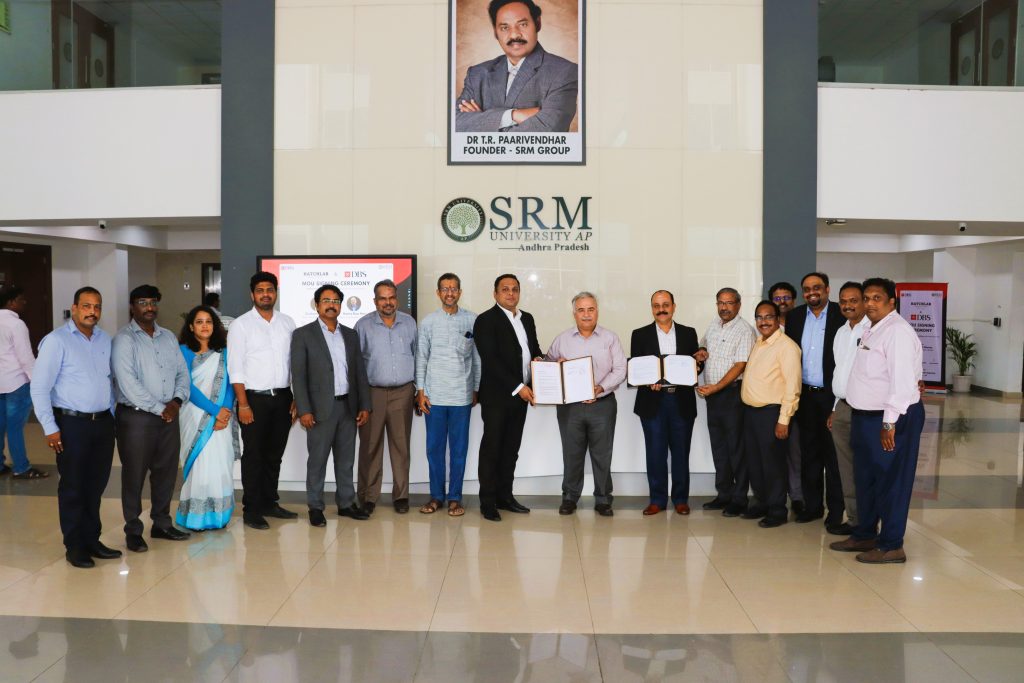
Hatchlab Research Centre, a technology and livelihood incubator, under The Directorate of Leadership, Innovation and Entrepreneurship has accomplished a milestone achievement as it joined forces with DBS Bank, India. A Memorandum of Understanding (MoU) was signed between the two parties in order to foster an entrepreneurial ecosystem in the varsity. The collaboration aims to empower startups and offer incredible opportunities for our entrepreneurial community at SRM University-AP.
Senior Vice Presidents, Mr Sushant Shetty and Mr Rama Rao Peri, other senior members of the leadership team from DBS Bank India, Prof. Manoj K Arora, Vice Chancellor, SRM University-AP ; Dr R Premkumar, Registrar, SRM University-AP and Mr Udayan Bakshi, Associate Director – Entrepreneurship and the leadership team of Hatchlab Research Centre graced the occasion.
Continue reading → - Harnessing Body, Mind and Spirit June 23, 2023
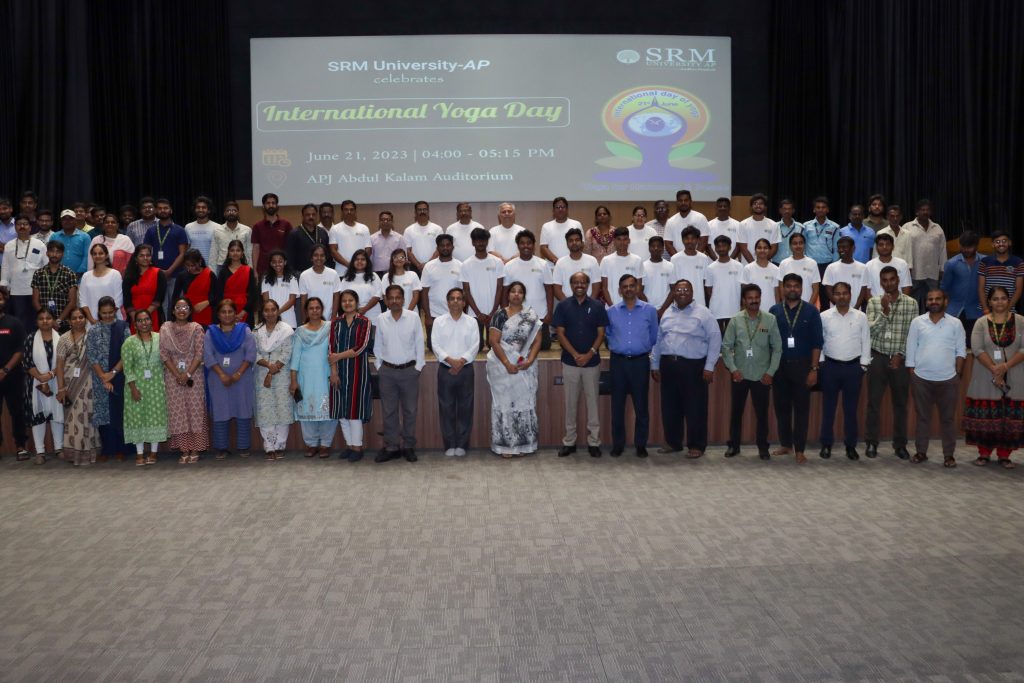
“Yoga is not just physical exercise. It is a union with the self, union with the universe. The universe lies outside and inside us. If we connect with ourselves, that means we are connecting with the universe” said Prof. Manoj K Arora, Vice Chancellor, SRM University-AP on the occasion of International Yoga Day Celebration held on June 21, 2023.
A yoga session was held under the joint venture of the Directorate of Sports and Directorate of Student Affairs. Prof. Arora, who participated as the Chief Guest in the programme addressed the staff and students through a session on Meditation and Wellness and announced the starting of a Yoga Club in the varsity.
Dr Abdul Mohimin, Assistant Director of Sports, spoke at length on the practice of yoga. Additionally, students of the varsity demonstrated dance yoga and clap yoga sessions, which left the audience invigorated. Dr R Premkumar, Registrar; Prof. Vishnupad, Dean-SLASS; Dr K Mohan, Director-ITKM; Dr Vijay Kumar Upadhyay, Director-Sports; Dr Manish Kumar, Director-Human Resources; Mr Pankaj Belwariar, Director-Communications; Mrs Suma N, CFAO; faculty; staff and students participated in the celebration.
- MoU with NITTE (Deemed to be University) to foster research in Biological Science June 21, 2023
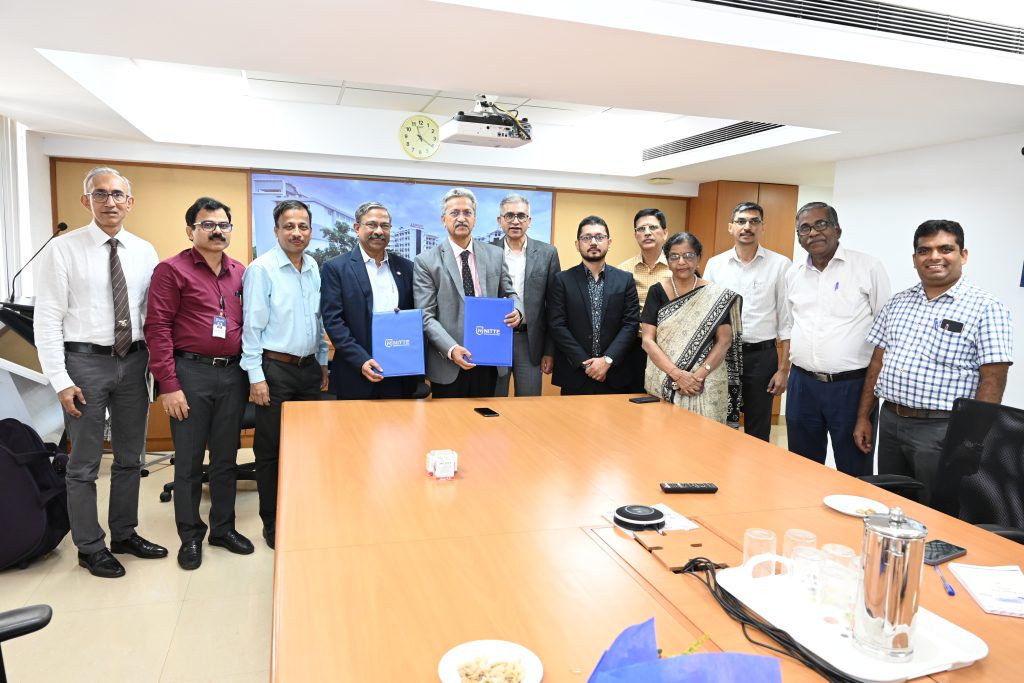
SRM University-AP inked an MoU with NITTE (Deemed to be University), Mangalore, on June 16, 2023, to promote academics and research in Biological Science. The MoU was signed at the NITTE Mangalore campus by Dr R Premkumar, Registrar, SRM University-AP and Prof. Dr Harsha Halahalli, Registrar, NITTE, in the presence of Prof. Dr MS Moodithaya, Vice-Chancellor, NITTE.
Prof. Dr MS Moodithaya termed this association a very important one for the university and expressed his confidence that the formal agreement will foster a mutually beneficial relationship through knowledge exchange, academic excellence, and research of societal relevance between the Universities. “I hope this collaboration can leverage both university’s strengths and complementary skills to undertake research projects that require a combination of expertise. I look forward to the synergy leading to more comprehensive and impactful research outcomes”, commented Prof. Manoj K Arora, Vice Chancellor, SRM University-AP, in response to the MoU.
Prof. Jayaseelan Murugaiyan, Head-Department of Biological Sciences, SRM University-AP and Dr Krishna Kumar, Associate Professor, NITTE University Centre for Science, Education and Research (NUCSER), have been collaborating for the last couple of years in the field of antimicrobial resistance. Prof. Anirban Chakraborty, Director- NUCSER and Prof. Jayaseelan Murugaiyan, SRM University-AP, are the authorised representatives from the respective universities. The Director, R&D; Director, Projects and DST-NUTEC; Director, Academia- Industry collaborations; Director, Institute Innovation Council; and Director, PG Studies and Clinical Research were among the others present on this occasion.
Continue reading → - Best Paper Award: Conferred to Dr Raviteja KVNS at RAISE 2023 June 20, 2023
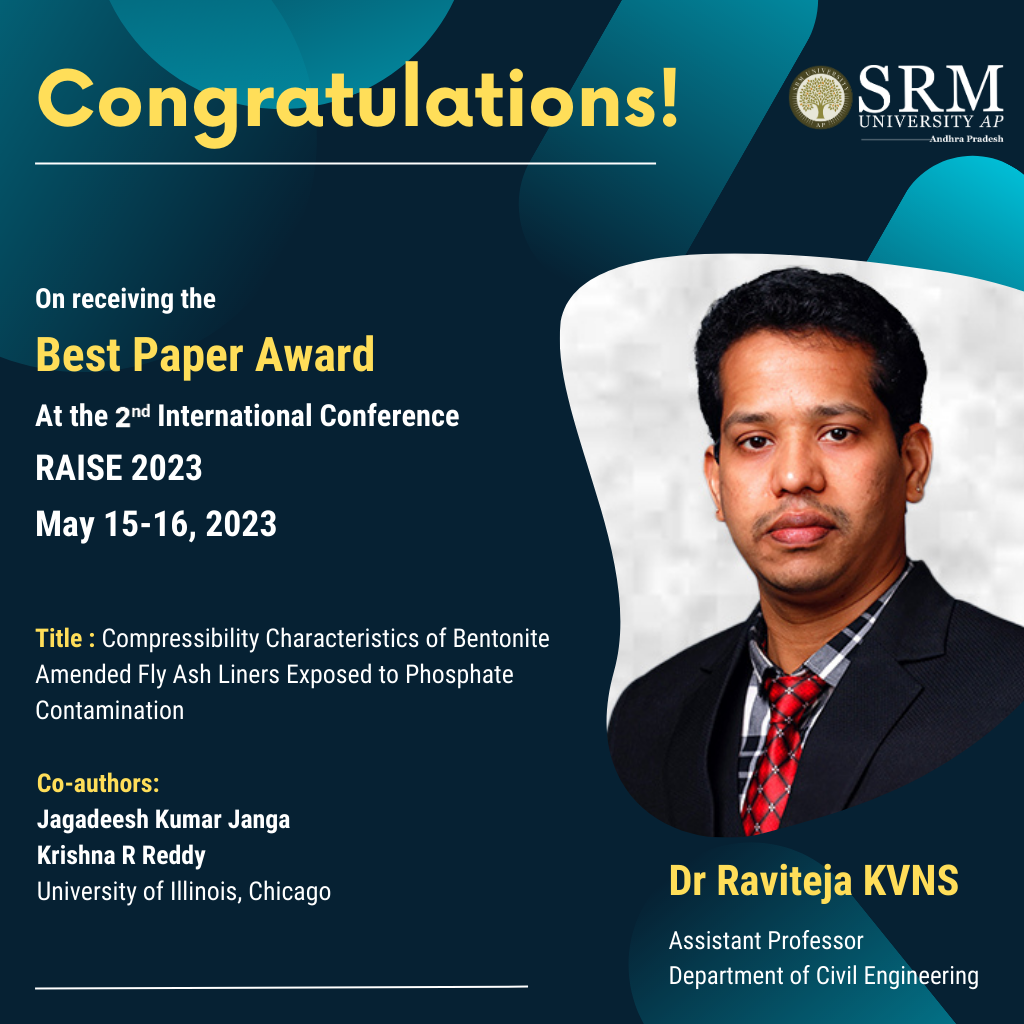
The Department of Civil Engineering is glad to announce that Dr Raviteja KVNS, Assistant Professor, has received the Best Paper Award for his paper titled “Compressibility Characteristics of Bentonite Amended Fly Ash Liners Exposed to Phosphate Contamination” at the 2nd International Conference RAISE 2023 (Recent Advances in Sustainable Environment) held on May 15-16, 2023. Dr Raviteja collaborated with Dr Janga Jagadeesh Kumar and Dr Krishna R Reddy, Civil, Materials and Environmental Engineering, University of Illinois Chicago for the research paper. Their cutting-edge research focused on developing alternate liner materials for waste containment systems.
Abstract
Waste containment systems like landfills, and impoundments are often lined with low permeable clays of hydraulic conductivity less than 10-7 cm/s. However, it is often challenging to get large volumes of low permeable clays near the project site. Conveyance of large volumes of clay from distant locations can be unsustainable due to the associated carbon emissions and energy costs, and not viable financially. Hence, there is a need to identify alternative liner materials without compromising on the containment capabilities. This study proposes the use of fly ash, amended with bentonite, as an alternative to the traditional liner systems. From preliminary studies, it is understood that a mixture of 80% fly ash amended with 20% bentonite is optimal to function as an effective liner material. However, the hydro-mechanical stability of liners needs to be investigated under different contamination scenarios. The present study reports the compressibility behavior of the proposed liner system under phosphate contamination, typically found in landfill leachate, impoundments, and stormwater retention ponds. One-dimensional consolidation tests were conducted on pure bentonite and fly ash with water to study the compressibility characteristics of individual materials. The optimum mix (80-20) was then tested at three different solutions exposure: water, 3.2 mg/L PO4-3-P and 12 mg/L PO4-3-P. It is depicted that the addition of 20% bentonite to fly ash did not affect the compressibility significantly, while the presence of phosphate contamination did not compromise the hydro-mechanical stability of the proposed liner system.
Continue reading → - Changes and Challenges in the Finance Domain June 19, 2023
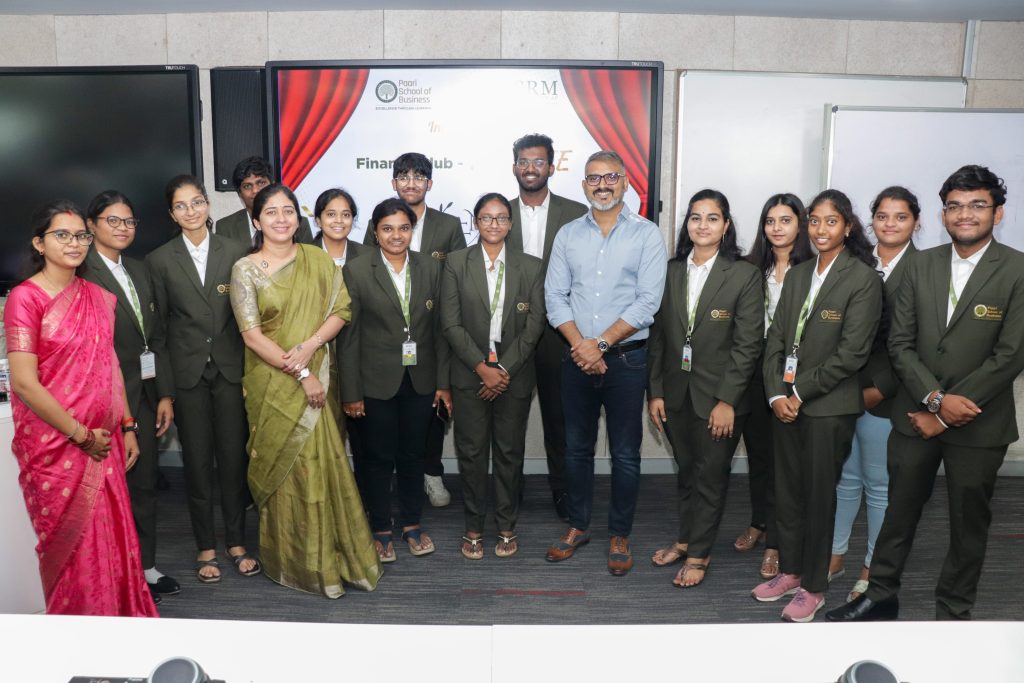
The B-School of SRM University-AP frequently organises invited lectures and guest talks by renowned industry experts that enlighten the students of the Paari School of Business on the evolving domains of business, finance and management. A recent guest talk featuring Dr Manish Jha, MD of Briisk Limited, founder and MD of Finkai and Myra Academy, as the keynote speaker was conducted on the topic “Digital Transformation in Financial Services: Challenges and Opportunities” on May 27, 2023.
Dr Manish Jha explicated the various nuances of the industry and advised the students on the specific skillsets that have to be mastered to survive in the rat race. He stated that improvisation skill is more important to survive in this dynamic field. Dr Jha explained the importance of an MBA and the difference in expectation and reality while pursuing a Master’s in Business. A detailed overview of different specialisations along with their scopes and opportunities was also discussed. He had also real-life examples from his own journey that deeply impressed and motivated the students and faculty of the school. Dr Jha also addressed Ms Sudha, who was also a guest at the talk and remarked that she is an inspiration for all the girl students who are interested in building up themselves.
Continue reading → - Role of Covid-19 Disruption June 15, 2023

Covid-19, has wreaked havoc in ordinary life, health and finance have taken the worst hit. As for finance, people saw the loss of their livelihood, businesses collapsed and for several mid-scale and large-scale businesses, the working capital and firm performance diminished to a great extent. In the given context, Dr Pradeep Rathore Assistant Professor from The Paari School of Business (PSB) published a compelling research paper titled, “Working Capital and Firm Performance: Role of COVID-19 Disruption” in International Journal of Productivity and Performance Management” where he addresses the issue and analyses the cause.
Abstract
This study examines the performance effect of working capital for a large sample of Indian manufacturing firms in light of supply chain disruption, i.e. the COVID-19 pandemic. This study is based on secondary data collected from the Prowess database on Indian manufacturing firms listed on the Bombay Stock Exchange (BSE) 500. Panel data regression analyses are used to estimate all models. Moreover, this study has employed robust standard errors to consider for heteroscedasticity concerns. The results challenge the current notion of working capital investment and reveal that higher working capital has a positive and significant impact on firm performance. Further, it highlights that Indian manufacturing firms suffered financially post-COVID-19 as they significantly lack the working capital to run day-to-day operations. This research contributes to the scant literature by examining the association between working capital financing and firm performance in light of the COVID-19 pandemic, representing typical developing economies like India.
The study implies that organisations need to have higher working capital during an economic downturn such as COVID-19 as it takes care of present and future financing needs, to facilitate their day-to-day operational activities, and to enhance performance of both working capital and firm performance, operational and financial. The study also suggests that Managers should understand the value of working capital and advocate for higher working capital investment to address supply chain disruptions during economic downturns.
Dr Pradeep Rathore is presently working on topics related to sustainable development
Continue reading →
goals, sustainability, and solid waste management. - Recalibrating Curricula to Set Students Free for Exploring New Knowledge Arenas June 12, 2023
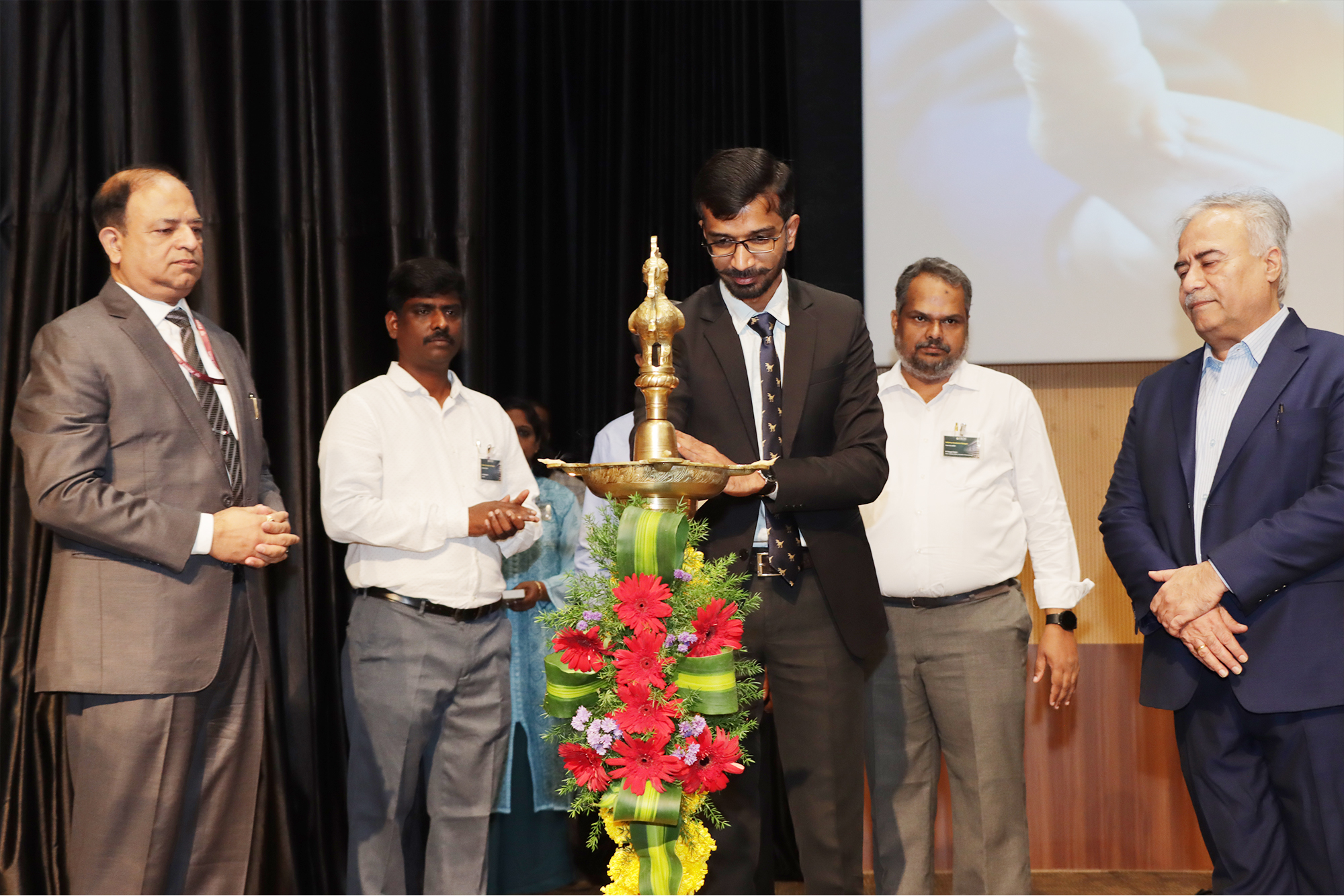 ‘‘You must give chances for students to explore new environments,’’ said Mr Dilip Gupta, MD of Sagarmala Development Company Ltd., while appreciating SRM University-AP for courageously taking the initiative to revamp the curricula to meet next-generation learning standards. He was one of the Guests of Honour at the Industry-Academia Dialogue held at the varsity with the objective of Revamping Curricula for Achieving Academic Excellence.
‘‘You must give chances for students to explore new environments,’’ said Mr Dilip Gupta, MD of Sagarmala Development Company Ltd., while appreciating SRM University-AP for courageously taking the initiative to revamp the curricula to meet next-generation learning standards. He was one of the Guests of Honour at the Industry-Academia Dialogue held at the varsity with the objective of Revamping Curricula for Achieving Academic Excellence.The conclave considered the guidelines the National Education Policy (NEP) set forth and discussed the need to revamp the curricula to adapt the varsity’s educational programmes accordingly. Mr Gupta elaborated on why the curriculum of educational institutions should be crafted with windows for students to explore themselves and newer arenas of knowledge. He implored the Vice Chancellor and the varsity faculty to pose a new challenge for the students every day.
Mr V Vinod Kumar, IAS, MD, Andhra Pradesh Skill Development Corporation (APSDC), was the other Guest of Honour at the event. He lauded the impact of a well-crafted and executed curriculum in escalating the employment rate of society while generating skilled professionals. ‘‘You need to impart skill to students while they are at the educational set-up. Polish them inside the educational institution. It is a herculean task, but I’m sure we are on the right path,’’ added Mr Vinod.
Honourable Vice Chancellor Prof. Manoj K Arora lightened the lamp with the Guests of Honour and began the conclave. Prof. Arora presented the university-level curriculum framework in front of the esteemed delegates and the university faculty, while deans of the three varsity schools presented the school’s overviews, achievements, and aspirations. Dr R Premkumar, Registrar and Dr Vinayak Kalluri, Dean-Academic Affairs and Controller of Examination, graced the occasion with their valuable presence. More than 50 professionals from the industry and leading practitioners from the social sector participated in the dialogue to address the foreseen challenges in higher education and recalibrate the curriculum of the varsity.
Through multiple sessions, the all-day-long dialogue considered the imperative to cultivate and enhance high levels of technological and social skills within the digital era’s present and future workforce. A joint panel discussion on 21st-century skills and Interdisciplinary learning with representatives from Academia and Industries; and a brainstorming session on exploring ways for continuous industry engagement with academia were also held as part of the conclave. The distinguished delegates visited the research centres and facilities at SRM University-AP once the event was over.
Continue reading → - Product Kraft Cohort 1.0 Rallies an Innovative Culture among Students June 9, 2023
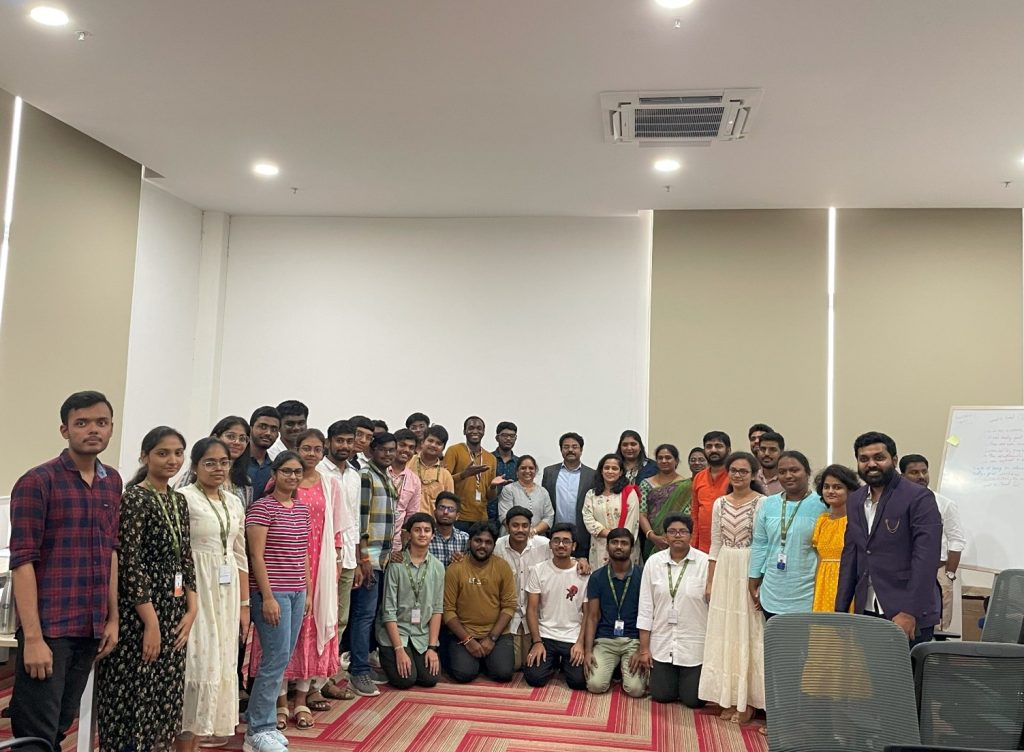
Product Kraft, a student-led community in association with Hatchlab Research Centre had conducted its first extensive workshop titled Product Kraft Cohort 1.0 of a series of workshops on Artificial Intelligence and Machine Learning (AI/ML) and the Internet of Things (IoT) in SRM University-AP. The workshop was marshalled under the direction of CEO of Hatchlab Research Centre, Mr Udayan Bakshi, in collaboration with SRM AP E-Cell and industrial partner Mr Baradwaj Avarapalli, co-founder of AB TechVille.
As the demand for professionals skilled in AI/ML and IoT continues to grow, the collaboration between Product Kraft and AB TechVille is poised to significantly impact the participants’ future careers. By providing a comprehensive learning experience and industry exposure, this workshop series aimed to empower participants to take on the challenges and opportunities presented by the ever-evolving technological landscape
The workshops covered a wide range of topics related to AI/ML and IoT, and also provided a platform for participants to network and engage with like-minded individuals, fostering a collaborative learning environment.
The workshop ended with a “Pitch and Win” contest, where jury members Srikanth Talluri, one of the top 100 Education Leaders and Innovator of Shanmukha 6D model and Sirisha Kasinadhuni, Founder & Director of AI Practices and Empiezo IT solutions evaluated the ideas and the prototype products of the participants. Based on their evaluation, startup ideas such as- Helugu, Oxygen Leakage Detection and Algo Trading Bot were awarded the first three prizes and appreciation medals. Selected startup ideas were endorsed under the HatchLab Research Center through an Elon fellowship to help the students transform their vision into reality through expert mentors present in SRM University-AP.
Continue reading →


